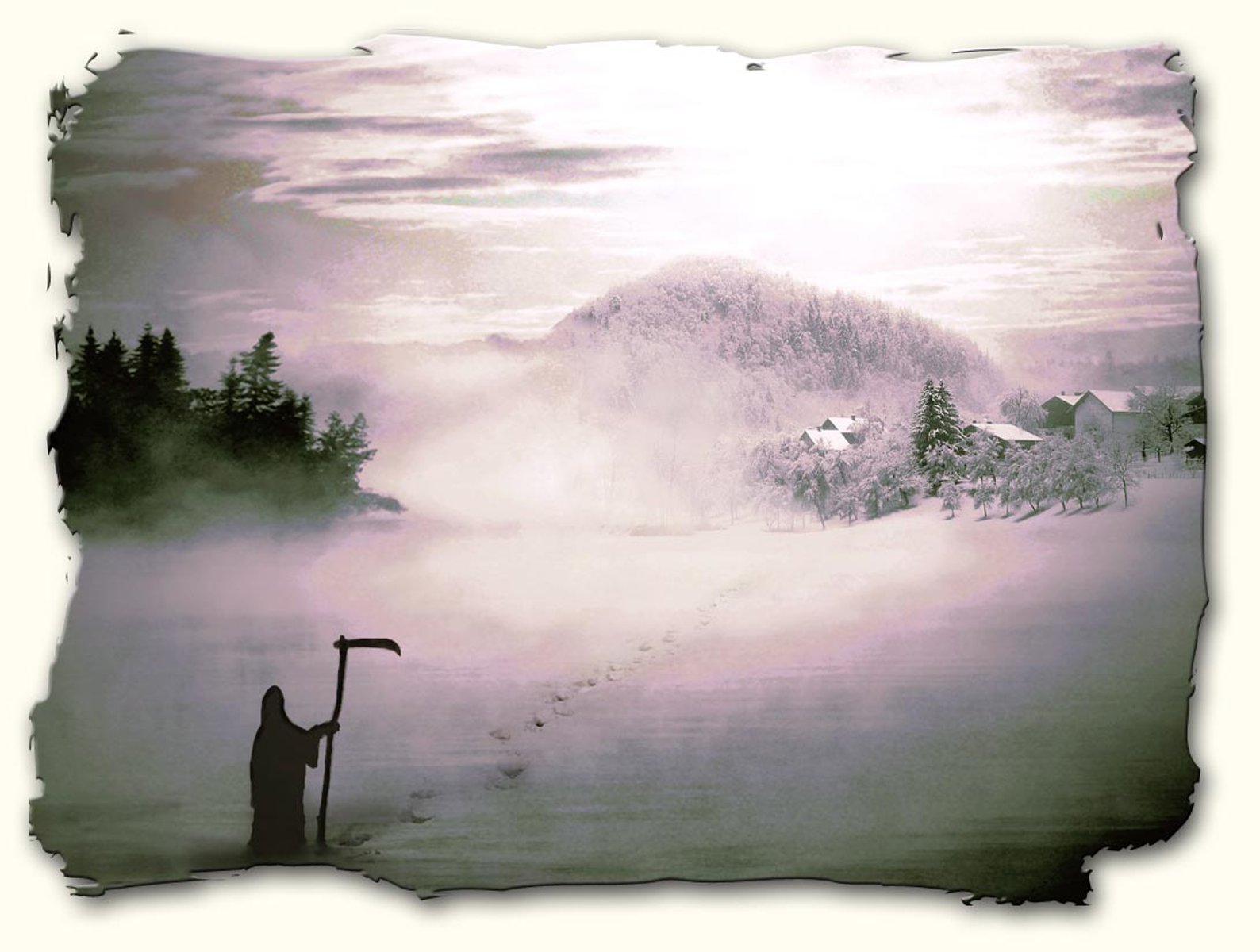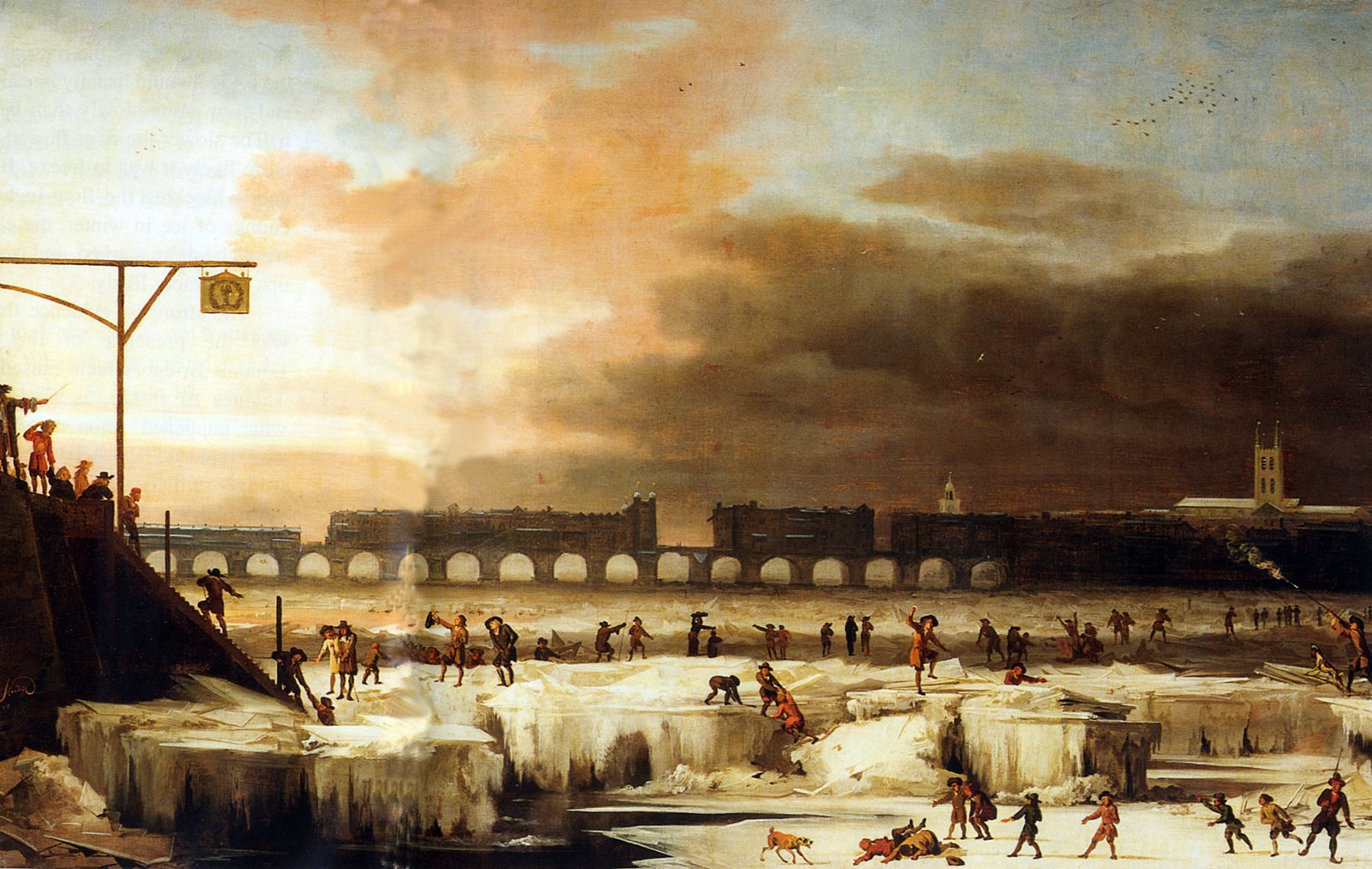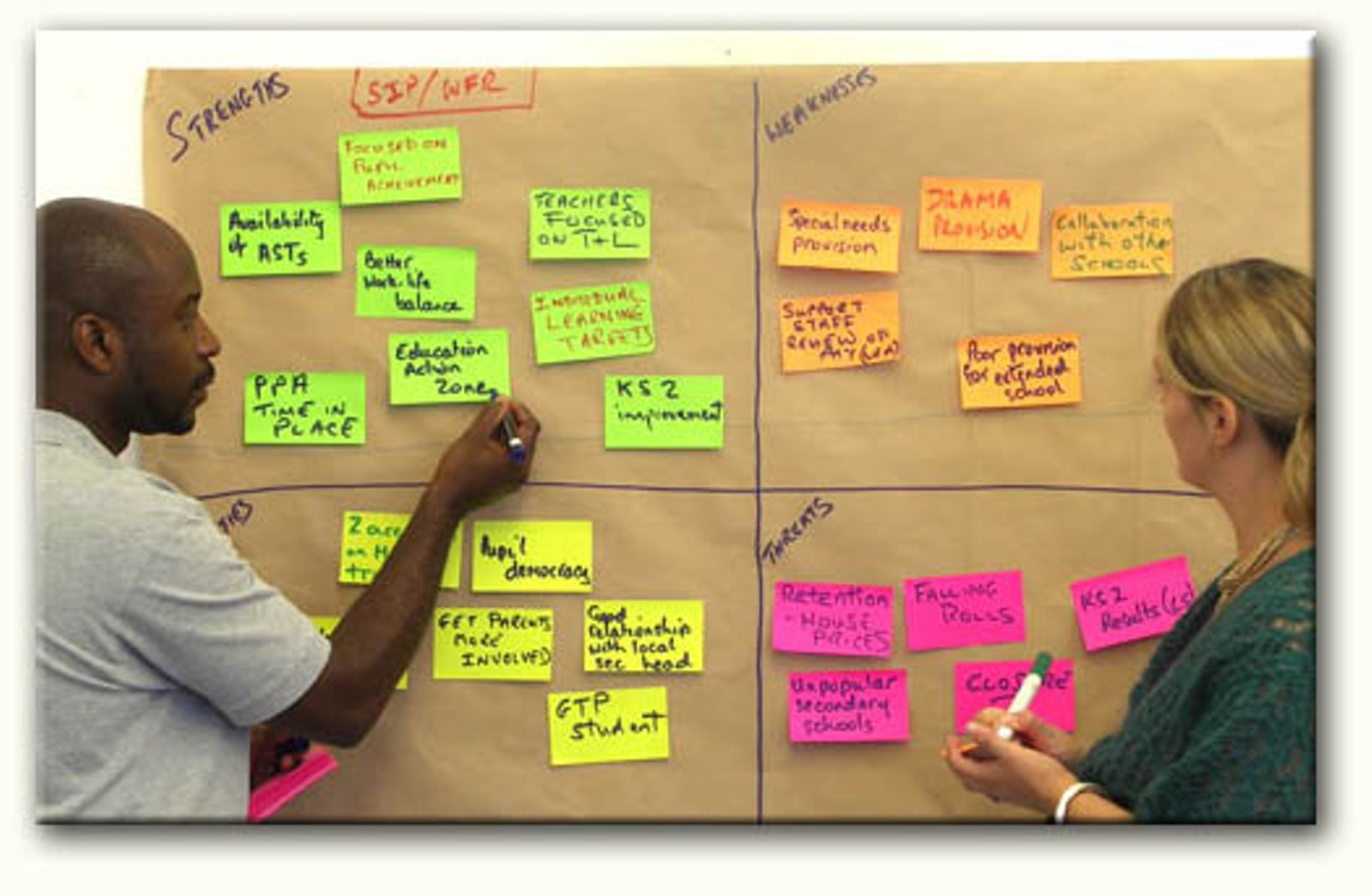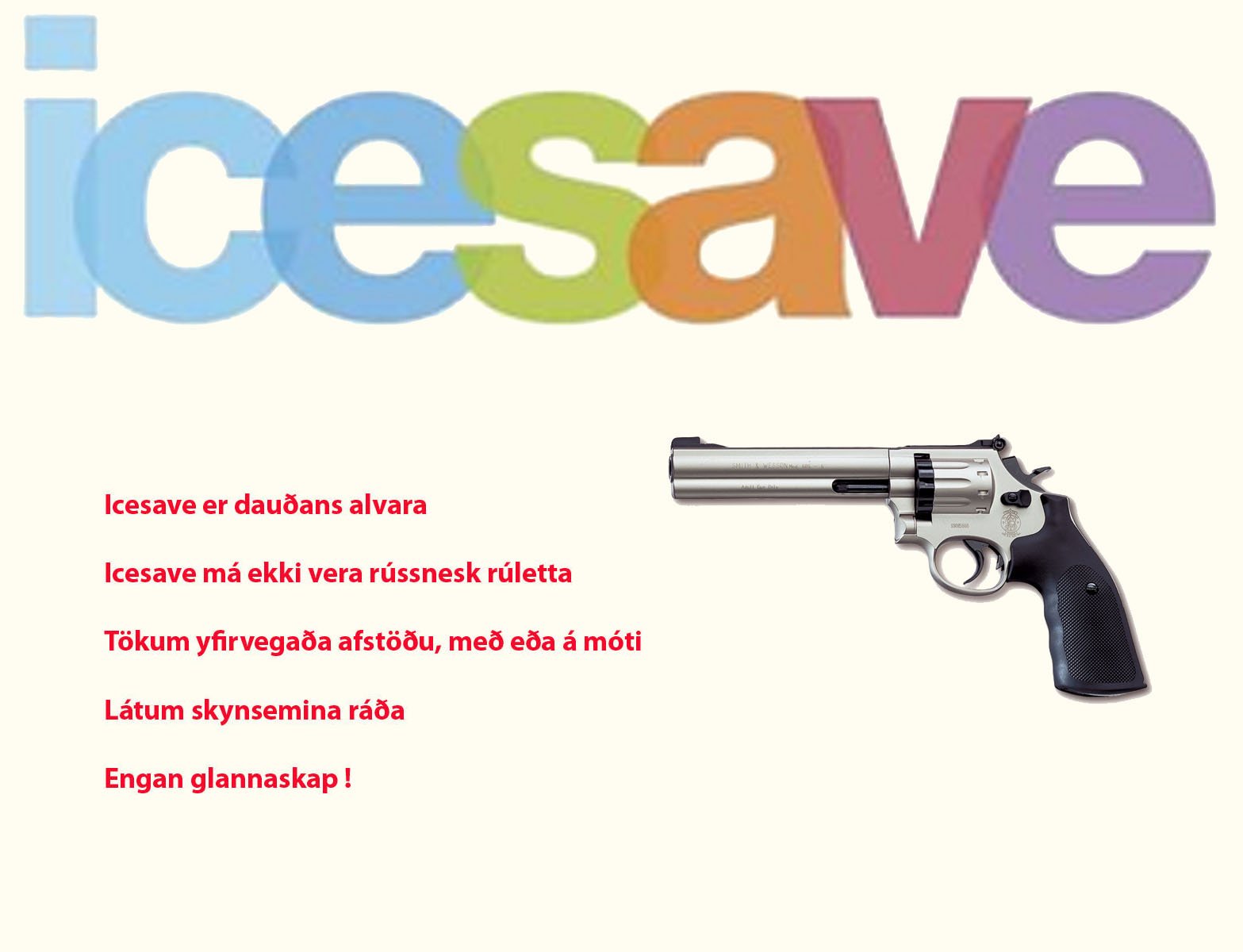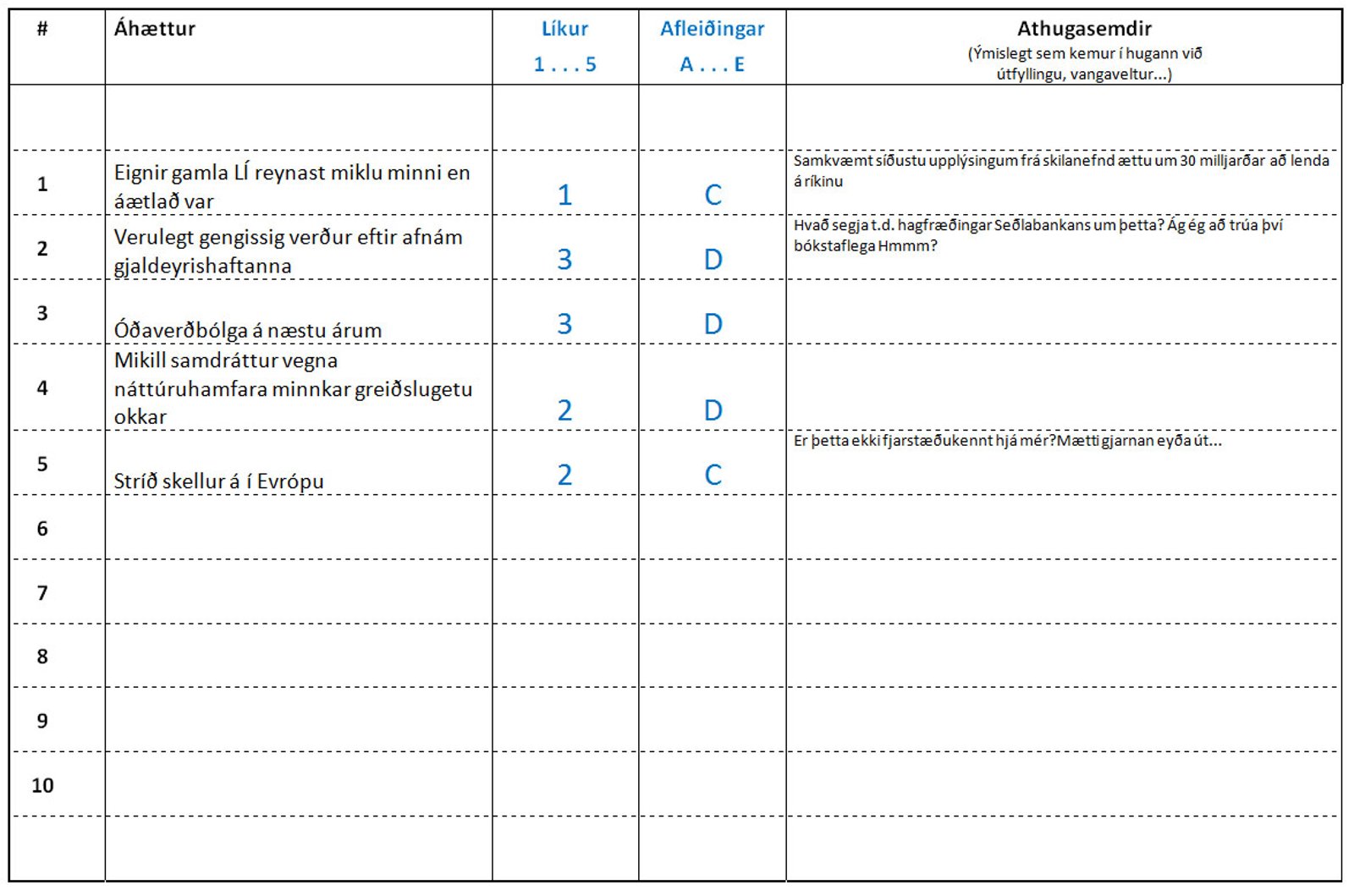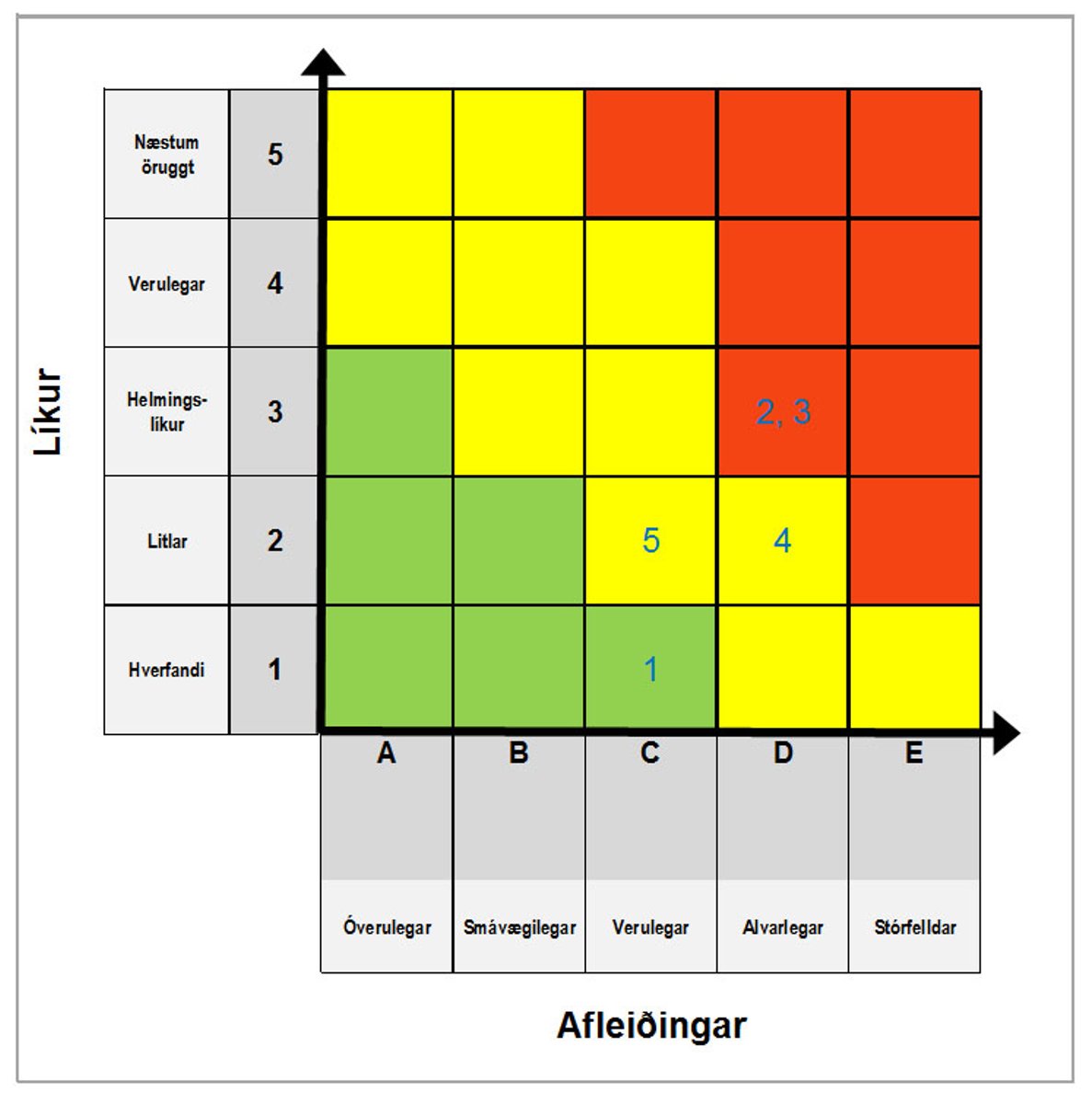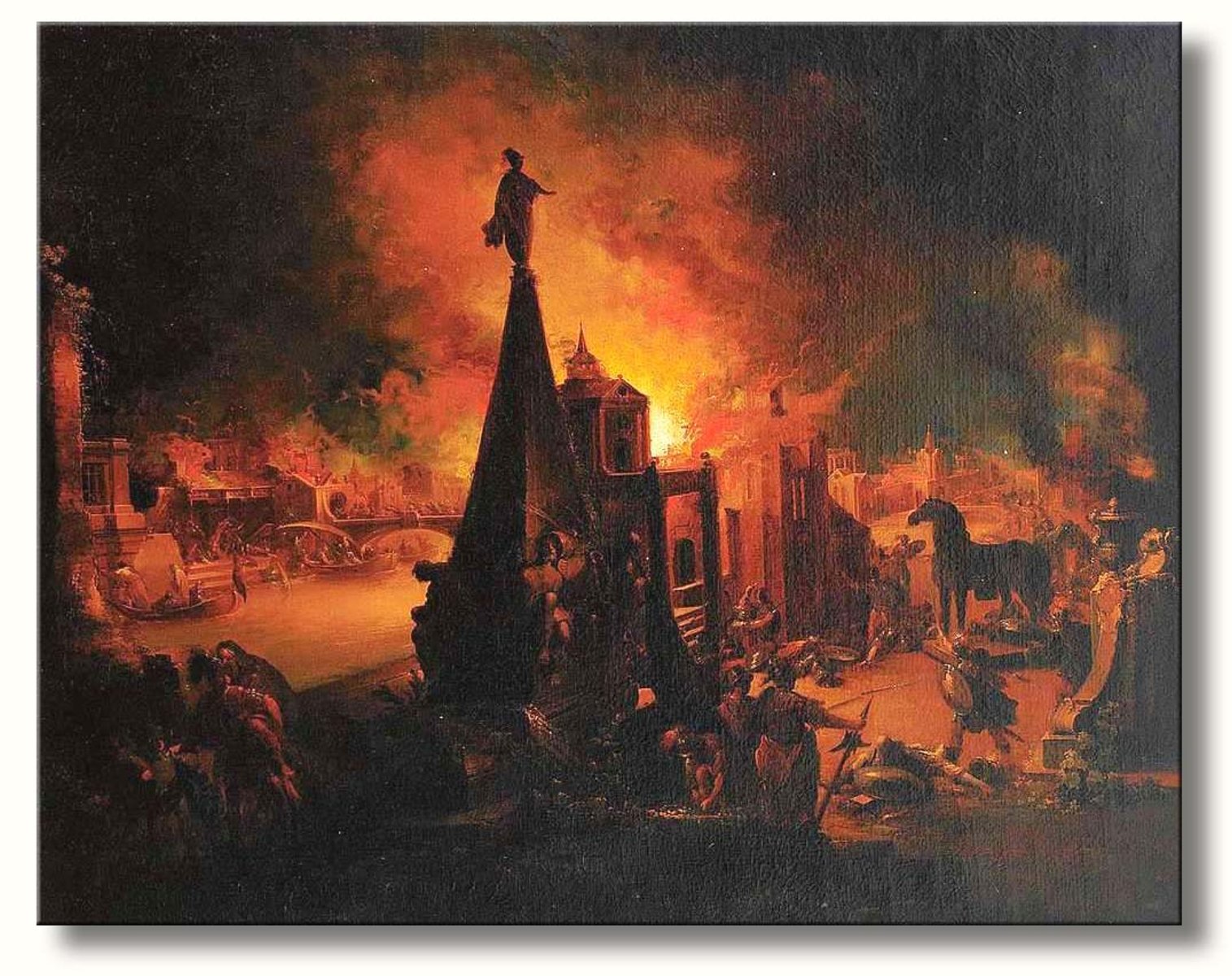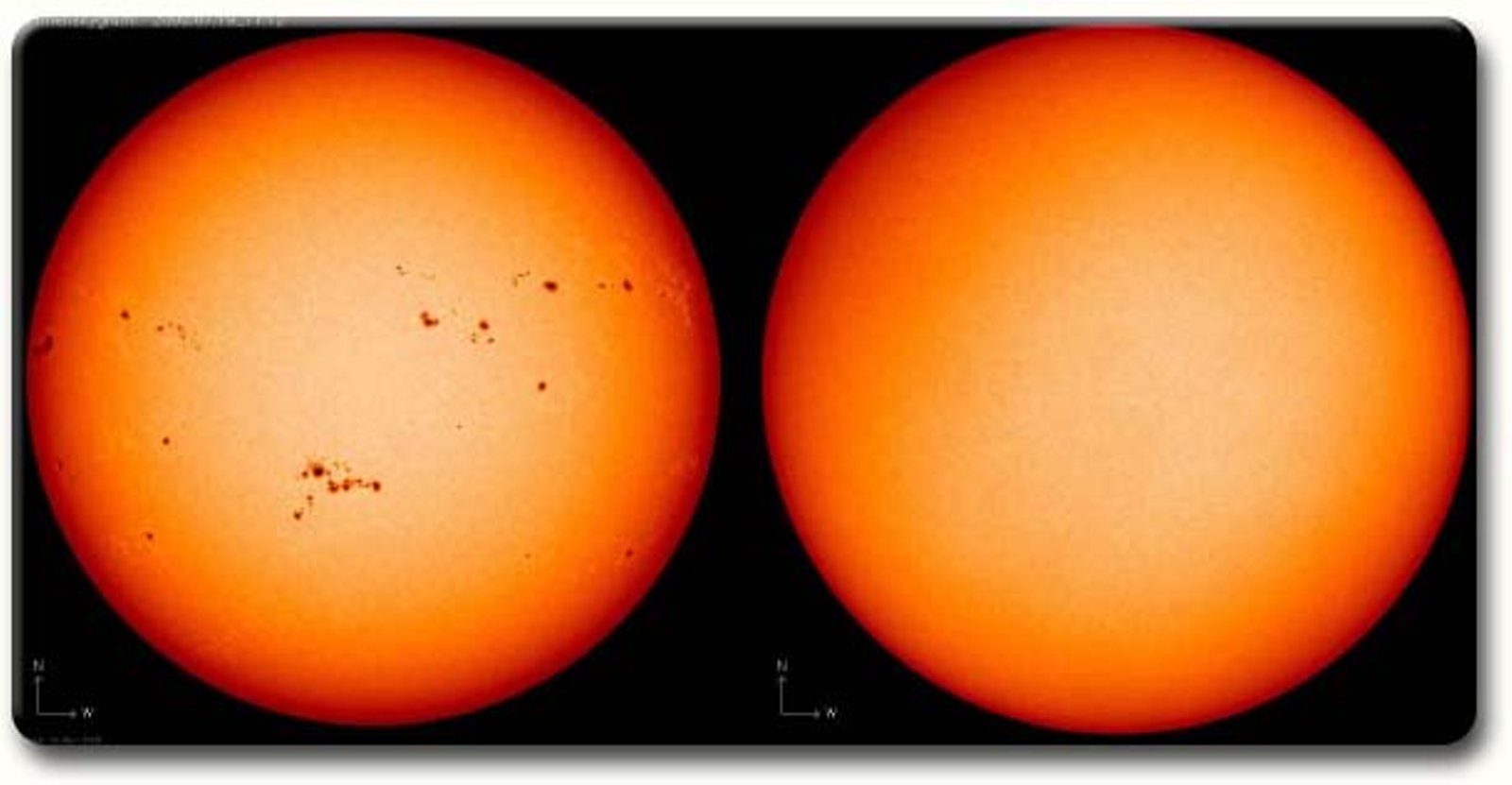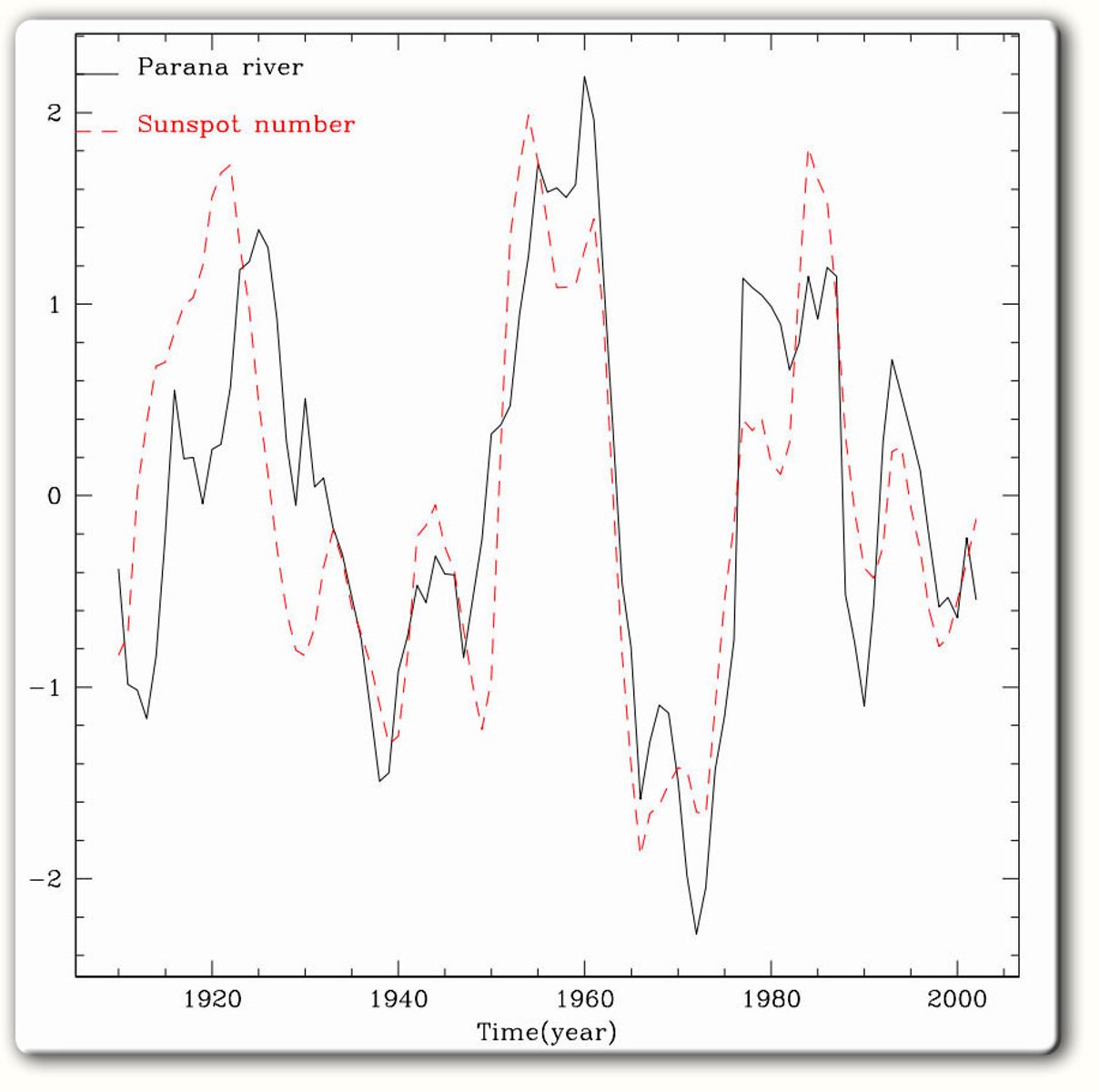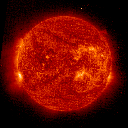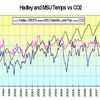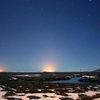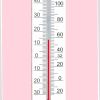Fęrsluflokkur: Utanrķkismįl/alžjóšamįl
Fimmtudagur, 3. desember 2015
Eiga sér staš loftslagsbreytingar af mannavöldum...?
Śr Višskiptablašinu 13. desember 2006
Fyrir um įratug var stutt vištal viš žessa vķsindamenn sem teljast verša vera mešal žeirra reyndustu į sviši vešur- og loftslagsfręša hér į landi.
Žór: "Um er aš ręša samspil margra žįtta sem gerir mįliš flókiš".
Trausti: "Mįliš er flókiš og margžętt og erfitt aš fullyrša niokkuš um žaš".
Pįll Bergžórsson, okkar allra reyndasti og virtasti vešurfręšingur, er sama sinnis
og hefur birt įhugaveršar kenningar um įhrif hafķssins į svokallaša 60 įra sveiflu.
Allir eru žessir vķsindamenn sammįla um aš žaš hafi hlżnaš į undanförnum įratugum,
losun į koltvķildi hafi aukist verulega, en ekki sé hęgt aš kenna styrk
koltvķildis eingöngu um breytingar ķ hitafari, žó svo aš įhrif žess séu einhver.
Śr Morgunblašinu ķ dag 3. desember 2015
Eldri bloggpistlar sem fjalla um raunverulega "manngerša hlżnun":
Hvers vegna er NASA aš afmynda hitaferilinn fyrir Reykjavķk...?
Kann einhver skil į žessum undarlegheitum...?

NASA - GISS
Utanrķkismįl/alžjóšamįl | Breytt s.d. kl. 15:28 | Slóš | Facebook
Mįnudagur, 19. október 2015
Mögnuš ręša Dr. Patrick Moore stofnanda Greenpeace...
Dr. Patrick Moore umhverfisfręšingur, stofnandi Greenpeace, hélt ķ sķšustu viku magnašan fyrirlestur. Myndband er hér fyrir nešan, en prentaša śtgįfu mį lesa nešar į sķšunni eša meš žvķ aš smella hér. Patrick Moore ręšir hér uppvaxtarįr sķn og skólagöngu og žį tķma sem hann starfaši meš Greenpeace eftir aš hann tók žįtt ķ stofnun samtakanna, svo og hvers vegna hann yfirgaf samtökin. Sķšan fjallar hann um koltvķsżring jaršsögunni og bendir į żmsar jįkvęšar hlišar mįlsins, en koltvķsżringur er undirstaša alls lķfs į jöršinni. Žetta er einkar fróšlegt og vel žess virši aš hlusta. Óneitanlega umhugsunarveršur vinkill į mįliš.
(Sjį annaš myndband nešst į sķšunni). |
Hér er gömul vefsķša frį Greenpeace. The Founders of GreenpeacePatrick Moore er annar frį vinstri ķ efri röš į myndinni į žessari gömlu Greenpeace vefsķšu, sem er afrituš hér fyrir nešan.
|
Kjósi einhver aš lesa frekar en aš horfa, žį er fyrirlesturinn eša ręšan frį 14. október 2015 hér ķ heild sinni:
My Lords and Ladies, Ladies and Gentlemen. Thank you for the opportunity to set out my views on climate change. As I have stated publicly on many occasions, there is no definitive scientific proof, through real-world observation, that carbon dioxide is responsible for any of the slight warming of the global climate that has occurred during the past 300 years, since the peak of the Little Ice Age. If there were such a proof through testing and replication it would have been written down for all to see. The contention that human emissions are now the dominant influence on climate is simply a hypothesis, rather than a universally accepted scientific theory. It is therefore correct, indeed verging on compulsory in the scientific tradition, to be skeptical of those who express certainty that “the science is settled” and “the debate is over”. But there is certainty beyond any doubt that CO2 is the building block for all life on Earth and that without its presence in the global atmosphere at a sufficient concentration this would be a dead planet. Yet today our children and our publics are taught that CO2 is a toxic pollutant that will destroy life and bring civilization to its knees. Tonight I hope to turn this dangerous human-caused propaganda on its head. Tonight I will demonstrate that human emissions of CO2 have already saved life on our planet from a very untimely end. That in the absence of our emitting some of the carbon back into the atmosphere from whence it came in the first place, most or perhaps all life on Earth would begin to die less than two million years from today.
But first a bit of background. I was born and raised in the tiny floating village of Winter Harbour on the northwest tip of Vancouver Island, in the rainforest by the Pacific. There was no road to my village so for eight years myself and a few other children were taken by boat each day to a one-room schoolhouse in the nearby fishing village. I didn’t realize how lucky I was playing on the tide flats by the salmon-spawning streams in the rainforest, until I was sent off to boarding school in Vancouver where I excelled in science. I did my undergraduate studies at the University of British Columbia, gravitating to the life sciences – biology, biochemistry, genetics, and forestry – the environment and the industry my family has been in for more than 100 years. Then, before the word was known to the general public, I discovered the science of ecology, the science of how all living things are inter-related, and how we are related to them. At the height of the Cold War, the Vietnam War, the threat of all-out nuclear war and the newly emerging consciousness of the environment I was transformed into a radical environmental activist. While doing my PhD in ecology in 1971 I joined a group of activists who had begun to meet in the basement of the Unitarian Church, to plan a protest voyage against US hydrogen bomb testing in Alaska. We proved that a somewhat rag-tag looking group of activists could sail an old fishing boat across the north Pacific ocean and help change the course of history. We created a focal point for the media to report on public opposition to the tests. When that H-bomb exploded in November 1971, it was the last hydrogen bomb the United States ever detonated. Even though there were four more tests planned in the series, President Nixon canceled them due to the public opposition we had helped to create. That was the birth of Greenpeace. Flushed with victory, on our way home from Alaska we were made brothers of the Namgis Nation in their Big House at Alert Bay near my northern Vancouver Island home. For Greenpeace this began the tradition of the Warriors of the Rainbow, after a Cree Indian legend that predicted the coming together of all races and creeds to save the Earth from destruction. We named our ship the Rainbow Warrior and I spent the next fifteen years in the top committee of Greenpeace, on the front lines of the environmental movement as we evolved from that church basement into the world’s largest environmental activist organization. Next we took on French atmospheric nuclear testing in the South Pacific. They proved a bit more difficult than the US nuclear tests. It took years to eventually drive these tests underground at Mururoa Atoll in French Polynesia. In 1985, under direct orders from President Mitterrand, French commandos bombed and sank the Rainbow Warrior in Auckland Harbour, killing our photographer. Those protests continued until long after I left Greenpeace. It wasn’t until the mid-1990s that nuclear testing finally ended in the South Pacific, and it most other parts of the world as well. Going back to 1975, Greenpeace set out to save the whales from extinction at the hands of huge factory whaling fleets. We confronted the Soviet factory whaling fleet in the North Pacific, putting ourselves in front of their harpoons in our little rubber boats to protect the fleeing whales. This was broadcast on television news around the world, bringing the Save the Whales movement into everyone’s living rooms for the first time. After four years of voyages, in 1979 factory whaling was finally banned in the North Pacific, and by 1981 in all the world’s oceans. In 1978 I sat on a baby seal off the East Coast of Canada to protect it from the hunter’s club. I was arrested and hauled off to jail, the seal was clubbed and skinned, but a photo of me being arrested while sitting on the baby seal appeared in more than 3000 newspapers around the world the next morning. We won the hearts and minds of millions of people who saw the baby seal slaughter as outdated, cruel, and unnecessary. Why then did I leave Greenpeace after 15 years in the leadership? When Greenpeace began we had a strong humanitarian orientation, to save civilization from destruction by all-out nuclear war. Over the years the “peace” in Greenpeace was gradually lost and my organization, along with much of the environmental movement, drifted into a belief that humans are the enemies of the earth. I believe in a humanitarian environmentalism because we are part of nature, not separate from it. The first principle of ecology is that we are all part of the same ecosystem, as Barbara Ward put it, “One human family on spaceship Earth”, and to preach otherwise teaches that the world would be better off without us. As we shall see later in the presentation there is very good reason to see humans as essential to the survival of life on this planet. In the mid 1980s I found myself the only director of Greenpeace International with a formal education in science. My fellow directors proposed a campaign to “ban chlorine worldwide”, naming it “The Devil’s Element”. I pointed out that chlorine is one of the elements in the Periodic Table, one of the building blocks of the Universe and the 11th most common element in the Earth’s crust. I argued the fact that chlorine is the most important element for public health and medicine. Adding chlorine to drinking water was the biggest advance in the history of public health and the majority of our synthetic medicines are based on chlorine chemistry. This fell on deaf ears, and for me this was the final straw. I had to leave. When I left Greenpeace I vowed to develop an environmental policy that was based on science and logic rather than sensationalism, misinformation, anti-humanism and fear. In a classic example, a recent protest led by Greenpeace in the Philippines used the skull and crossbones to associate Golden Rice with death, when in fact Golden Rice has the potential to help save 2 million children from death due to vitamin A deficiency every year.
The Keeling curve of CO2 concentration in the Earth’s atmosphere since 1959 is the supposed smoking gun of catastrophic climate change. We presume CO2 was at 280 ppm at the beginning of the Industrial Revolution, before human activity could have caused a significant impact. I accept that most of the rise from 280 to 400 ppm is caused by human CO2 emissions with the possibility that some of it is due to outgassing from warming of the oceans. NASA tells us that “Carbon Dioxide Controls Earth’s Temperature” in child-like denial of the many other factors involved in climate change. This is reminiscent of NASA’s contention that there might be life on Mars. Decades after it was demonstrated that there was no life on Mars, NASA continues to use it as a hook to raise public funding for more expeditions to the Red Planet. The promulgation of fear of Climate Change now serves the same purpose. As Bob Dylan prophetically pointed out, “Money doesn’t talk, it swears”, even in one of the most admired science organizations in the world. On the political front the leaders of the G7 plan to “end extreme poverty and hunger” by phasing out 85% of the world’s energy supply including 98% of the energy used to transport people and goods, including food. The Emperors of the world appear clothed in the photo taken at the close of the meeting but it was obviously Photo-shopped. They should be required to stand naked for making such a foolish statement. The world’s top climate body, the Intergovernmental Panel on Climate change, is hopelessly conflicted by its makeup and it mandate. The Panel is composed solely of the World Meteorological Organization, weather forecasters, and the United Nations Environment Program, environmentalists. Both these organizations are focused primarily on short-term timescales, days to maybe a century or two. But the most significant conflict is with the Panel’s mandate from the United Nations. They are required only to focus on “a change of climate which is attributed directly or indirectly to human activity that alters the composition of the atmosphere, and which is in addition to natural climate variability.”ā€ØSo if the IPCC found that climate change was not being affected by human alteration of the atmosphere or that it is not “dangerous” there would be no need for them to exist. They are virtually mandated to find on the side of apocalypse. Scientific certainty, political pandering, a hopelessly conflicted IPCC, and now the Pope, spiritual leader of the Catholic Church, in a bold move to reinforce the concept of original sin, says the Earth looks like “an immense pile of filth” and we must go back to pre-industrial bliss, or is that squalor? And then there is the actual immense pile of filth fed to us more than three times daily by the green-media nexus, a seething cauldron of imminent doom, like we are already condemned to Damnation in Hell and there is little chance of Redemption. I fear for the end of the Enlightenment. I fear an intellectual Gulag with Greenpeace as my prison guards.
Let’s begin with our knowledge of the long-term history of the Earth’s temperature and of CO2 in the Earth’s atmosphere. Our best inference from various proxies back indicate that CO2 was higher for the first 4 billion years of Earth’s history than it has been since the Cambrian Period until today. I will focus on the past 540 million years since modern life forms evolved. It is glaringly obvious that temperature and CO2 are in an inverse correlation at least as often as they are in any semblance of correlation. Two clear examples of reverse correlation occurred 150 million years and 50 million years ago. At the end of the Jurassic temperature fell dramatically while CO2 spiked. During the Eocene Thermal Maximum, temperature was likely higher than any time in the past 550 million years while CO2 had been on a downward track for 100 million years. This evidence alone sufficient to warrant deep speculation of any claimed lock-step causal relationship between CO2 and temperature. The Devonian Period beginning 400 million years ago marked the culmination of the invasion of life onto the land. Plants evolved to produce lignin, which in combination with cellulose, created wood which in turn for the first time allowed plants to grow tall, in competition with each other for sunlight. As vast forests spread across the land living biomass increased by orders of magnitude, pulling down carbon as CO2 from the atmosphere to make wood. Lignin is very difficult to break down and no decomposer species possessed the enzymes to digest it. Trees died atop one another until they were 100 metres or more in depth. This was the making of the great coal beds around the world as this huge store of sequestered carbon continued to build for 90 million years. Then, fortunately for the future of life, white rot fungi evolved to produce the enzymes that can digest lignin and coincident with that the coal-making era came to an end. There was no guarantee that fungi or any other decomposer species would develop the complex of enzymes required to digest lignin. If they had not, CO2, which had already been drawn down for the first time in Earth’s history to levels similar to todays, would have continued to decline as trees continued to grow and die. That is until CO2 approached the threshold of 150 ppm below which plants begin first to starve, then stop growing altogether, and then die. Not just woody plants but all plants. This would bring about the extinction of most, if not all, terrestrial species, as animals, insects, and other invertebrates starved for lack of food. And that would be that. The human species would never have existed. This was only the first time that there was a distinct possibility that life would come close to extinguishing itself, due to a shortage of CO2, which is essential for life on Earth. A well-documented record of global temperature over the past 65 million years shows that we have been in a major cooling period since the Eocene Thermal Maximum 50 million years ago. The Earth was an average 16C warmer then, with most of the increased warmth at the higher latitudes. The entire planet, including the Arctic and Antarctica were ice-free and the land there was covered in forest. The ancestors of every species on Earth today survived through what may have been the warmest time in the history of life. It makes one wonder about dire predictions that even a 2C rise in temperature from pre-industrial times would cause mass extinctions and the destruction of civilization. Glaciers began to form in Antarctica 30 million years ago and in the northern hemisphere 3 million years ago. Today, even in this interglacial period of the Pleistocene Ice Age, we are experiencing one of the coldest climates in the Earth’s history. Coming closer to the present we have learned from Antarctic ice cores that for the past 800,000 years there have been regular periods of major glaciation followed by interglacial periods in 100,000 year-cycles. These cycles coincide with the Milankovitch cycles that are tied to the eccentricity of the Earth’s orbit and its axial tilt. It is highly plausible that these cycles are related to solar intensity and the seasonal distribution of solar heat on the Earth’s surface. There is a strong correlation between temperature and the level of atmospheric CO2 during these successive glaciations, indicating a possible cause-effect relationship between the two. CO2 lags temperature by an average of 800 years during the most recent 400,000-year period, indicating that temperature is the cause, as the cause never comes after the effect. Looking at the past 50,000 years of temperature and CO2 we can see that changes in CO2 follow changes in temperature. This is as one could expect, as the Milankovitch cycles are far more likely to cause a change in temperature than a change in CO2. And a change in the temperature is far more likely to cause a change in CO2 due to outgassing of CO2 from the oceans during warmer times and an ingassing (absorption) of CO2 during colder periods. Yet climate alarmists persist in insisting that CO2 is causing the change in temperature, despite the illogical nature of that assertion.
It is sobering to consider the magnitude of climate change during the past 20,000 years, since the peak of the last major glaciation. At that time there were 3.3 kilometres of ice on top of what is today the city of Montreal, a city of more than 3 million people. 95% of Canada was covered in a sheet of ice. Even as far south as Chicago there was nearly a kilometre of ice. If the Milankovitch cycle continues to prevail, and there is little reason aside from our CO2 emissions to think otherwise, this will happen gradually again during the next 80,000 years. Will our CO2 emissions stave off another glaciation as James Lovelock has suggested? There doesn’t seem to be much hope of that so far, as despite 1/3 of all our CO2 emissions being released during the past 18 years the UK Met Office contends there has been no statistically significant warming during this century. At the height of the last glaciation the sea level was about 120 metres lower than it is today. By 7,000 years ago all the low-altitude, mid-latitude glaciers had melted. There is no consensus about the variation in sea level since then although many scientists have concluded that the sea level was higher than today during the Holocene Thermal optimum from 9,000 to 5,000 years ago when the Sahara was green. The sea level may also have been higher than today during the Medieval Warm Period. Hundred of islands near the Equator in Papua, Indonesia, have been undercut by the sea in a manner that gives credence to the hypothesis that there has been little net change in sea level in the past thousands of years. It takes a long time for so much erosion to occur from gentle wave action in a tropical sea. Coming back to the relationship between temperature and CO2 in the modern era we can see that temperature has risen at a steady slow rate in Central England since 1700 while human CO2 emissions were not relevant until 1850 and then began an exponential rise after 1950. This is not indicative of a direct causal relationship between the two. After freezing over regularly during the Little Ice Age the River Thames froze for the last time in 1814, as the Earth moved into what might be called the Modern Warm Period.
The IPCC states it is “extremely likely” that human emissions have been the dominant cause of global warming “since the mid-20th century”, that is since 1950. They claim that “extremely” means 95% certain, even though the number 95 was simply plucked from the air like an act of magic. And “likely” is not a scientific word but rather indicative of a judgment, another word for an opinion. There was a 30-year period of warming from 1910-1940, then a cooling from 1940 to 1970, just as CO2 emissions began to rise exponentially, and then a 30-year warming from 1970-2000 that was very similar in duration and temperature rise to the rise from 1910-1940. One may then ask “what caused the increase in temperature from 1910-1940 if it was not human emissions? And if it was natural factors how do we know that the same natural factors were not responsible for the rise between 1970-2000.” You don’t need to go back millions of years to find the logical fallacy in the IPCC’s certainty that we are the villains in the piece. Water is by far the most important greenhouse gas, and is the only molecule that is present in the atmosphere in all three states, gas, liquid, and solid. As a gas, water vapour is a greenhouse gas, but as a liquid and solid it is not. As a liquid water forms clouds, which send solar radiation back into space during the day and hold heat in at night. There is no possibility that computer models can predict the net effect of atmospheric water in a higher CO2 atmosphere. Yet warmists postulate that higher CO2 will result in positive feedback from water, thus magnifying the effect of CO2 alone by 2-3 times. Other scientists believe that water may have a neutral or negative feedback on CO2. The observational evidence from the early years of this century tends to reinforce the latter hypothesis.
How many politicians or members of the media or the public are aware of this statement about climate change from the IPCC in 2007? “we should recognise that we are dealing with a coupled nonlinear chaotic system, and therefore that the long-term prediction of future climate states is not possible.” There is a graph showing that the climate models have grossly exaggerated the rate of warming that confirms the IPCC statement. The only trends the computer models seem able to predict accurately are ones that have already occurred.
Coming to the core of my presentation, CO2 is the currency of life and the most important building block for all life on Earth. All life is carbon-based, including our own. Surely the carbon cycle and its central role in the creation of life should be taught to our children rather than the demonization of CO2, that “carbon” is a “pollutant” that threatens the continuation of life. We know for a fact that CO2 is essential for life and that it must be at a certain level in the atmosphere for the survival of plants, which are the primary food for all the other species alive today. Should we not encourage our citizens, students, teachers, politicians, scientists, and other leaders to celebrate CO2 as the giver of life that it is? It is a proven fact that plants, including trees and all our food crops, are capable of growing much faster at higher levels of CO2 than present in the atmosphere today. Even at the today’s concentration of 400 ppm plants are relatively starved for nutrition. The optimum level of CO2 for plant growth is about 5 times higher, 2000 ppm, yet the alarmists warn it is already too high. They must be challenged every day by every person who knows the truth in this matter. CO2 is the giver of life and we should celebrate CO2 rather than denigrate it as is the fashion today. We are witnessing the “Greening of the Earth” as higher levels of CO2, due to human emissions from the use of fossil fuels, promote increased growth of plants around the world. This has been confirmed by scientists with CSIRO in Australia, in Germany, and in North America. Only half of the CO2 we are emitting from the use of fossil fuels is showing up in the atmosphere. The balance is going somewhere else and the best science says most of it is going into an increase in global plant biomass. And what could be wrong with that, as forests and agricultural crops become more productive? All the CO2 in the atmosphere has been created by outgassing from the Earth’s core during massive volcanic eruptions. This was much more prevalent in the early history of the Earth when the core was hotter than it is today. During the past 150 million years there has not been enough addition of CO2 to the atmosphere to offset the gradual losses due to burial in sediments.
Let’s look at where all the carbon is in the world, and how it is moving around. Today, at just over 400 ppm CO2 there are 850 billion tons of CO2 in the atmosphere. By comparison, when modern life-forms evolved over 500 million years ago there was nearly 15,000 billion tons of CO2 in the atmosphere, 17 times today’s level. Plants and soils combined contain more than 2,000 billion tons of carbon, more that twice as much as the entire global atmosphere. The oceans contain 38,000 billion tons of dissolved CO2, 45 times as much as in the atmosphere. Fossil fuels, which were made from plants that pulled CO2 from the atmosphere account for 5,000 – 10,000 billion tons of carbon, 6 – 12 times as much carbon as is in the atmosphere. But the truly stunning number is the amount of carbon that has been sequestered from the atmosphere and turned into carbonaceous rocks. 100,000,000 billion tons, that’s one quadrillion tons of carbon, have been turned into stone by marine species that learned to make armour-plating for themselves by combining calcium and carbon into calcium carbonate. Limestone, chalk, and marble are all of life origin and amount to 99.9% of all the carbon ever present in the global atmosphere. The white cliffs of Dover are made of the calcium carbonate skeletons of coccolithophores, tiny marine phytoplankton. The vast majority of the carbon dioxide that originated in the atmosphere has been sequestered and stored quite permanently in carbonaceous rocks where it cannot be used as food by plants. Beginning 540 million years ago at the beginning of the Cambrian Period many marine species of invertebrates evolved the ability to control calcification and to build armour plating to protect their soft bodies. Shellfish such as clams and snails, corals, coccolithofores (phytoplankton) and foraminifera (zooplankton) began to combine carbon dioxide with calcium and thus to remove carbon from the life cycle as the shells sank into sediments; 100,000,000 billion tons of carbonaceous sediment. It is ironic that life itself, by devising a protective suit of armour, determined its own eventual demise by continuously removing CO2 from the atmosphere. This is carbon sequestration and storage writ large. These are the carbonaceous sediments that form the shale deposits from which we are fracking gas and oil today. And I add my support to those who say, “OK UK, get fracking”. The past 150 million years has seen a steady drawing down of CO2 from the atmosphere. There are many components to this but what matters is the net effect, a removal on average of 37,000 tons of carbon from the atmosphere every year for 150 million years. The amount of CO2 in the atmosphere was reduced by about 90% during this period. This means that volcanic emissions of CO2 have been outweighed by the loss of carbon to calcium carbonate sediments on a multi-million year basis. If this trend continues CO2 will inevitably fall to levels that threaten the survival of plants, which require a minimum of 150 ppm to survive. If plants die all the animals, insects, and other invertebrates that depend on plants for their survival will also die.
How long will it be at the present level of CO2 depletion until most or all of life on Earth is threatened with extinction by lack of CO2 in the atmosphere? During this Pleistocene Ice Age, CO2 tends to reach a minimum level when the successive glaciations reach their peak. During the last glaciation, which peaked 18,000 years ago, CO2 bottomed out at 180 ppm, extremely likely the lowest level CO2 has been in the history of the Earth. This is only 30 ppm above the level that plants begin to die. Paleontological research has demonstrated that even at 180 ppm there was a severe restriction of growth as plants began to starve. With the onset of the warmer interglacial period CO2 rebounded to 280 ppm. But even today, with human emissions causing CO2 to reach 400 ppm plants are still restricted in their growth rate, which would be much higher if CO2 were at 1000-2000 ppm. Here is the shocking news. If humans had not begun to unlock some of the carbon stored as fossil fuels, all of which had been in the atmosphere as CO2 before sequestration by plants and animals, life on Earth would have soon been starved of this essential nutrient and would begin to die. Given the present trends of glaciations and interglacial periods this would likely have occurred less than 2 million years from today, a blink in nature’s eye, 0.05% of the 3.5 billion-year history of life. No other species could have accomplished the task of putting some of the carbon back into the atmosphere that was taken out and locked in the Earth’s crust by plants and animals over the millennia. This is why I honour James Lovelock in my lecture this evening. Jim was for many years of the belief that humans are the one-and-only rogue species on Gaia, destined to cause catastrophic global warming. I enjoy the Gaia hypothesis but I am not religious about it and for me this was too much like original sin. It was as if humans were the only evil species on the Earth.
But James Lovelock has seen the light and realized that humans may be part of Gaia’s plan, and he has good reason to do so. And I honour him because it takes courage to change your mind after investing so much of your reputation on the opposite opinion. Rather than seeing humans as the enemies of Gaia, Lovelock now sees that we may be working with Gaia to “stave of another ice age”, or major glaciation. This is much more plausible than the climate doom-and gloom scenario because our release of CO2 back into the atmosphere has definitely reversed the steady downward slide of this essential food for life, and hopefully may reduce the chance that the climate will slide into another period of major glaciation. We can be certain that higher levels of CO2 will result in increased plant growth and biomass. We really don’t know whether or not higher levels of CO2 will prevent or reduce the eventual slide into another major glaciation. Personally I am not hopeful for this because the long-term history just doesn’t support a strong correlation between CO2 and temperature.
It does boggle the mind in the face of our knowledge that the level of CO2 has been steadily falling that human CO2 emissions are not universally acclaimed as a miracle of salvation. From direct observation we already know that the extreme predictions of CO2’s impact on global temperature are highly unlikely given that about one-third of all our CO2 emissions have been discharged during the past 18 years and there has been no statistically significant warming. And even if there were some additional warming that would surely be preferable to the extermination of all or most species on the planet. You heard it here. “Human emissions of carbon dioxide have saved life on Earth from inevitable starvation and extinction due to lack of CO2”. To use the analogy of the Atomic Clock, if the Earth were 24 hours old we were at 38 seconds to midnight when we reversed the trend towards the End Times. If that isn’t good news I don’t know what is. You don’t get to stave off Armageddon every day.
I issue a challenge to anyone to provide a compelling argument that counters my analysis of the historical record and the prediction of CO2 starvation based on the 150 million year trend. Ad hominem arguments about “deniers” need not apply. I submit that much of society has been collectively misled into believing that global CO2 and temperature are too high when the opposite is true for both. Does anyone deny that below 150 ppm CO2 that plants will die? Does anyone deny that the Earth has been in a 50 million-year cooling period and that this Pleistocene Ice Age is one of the coldest periods in the history of the planet?
If we assume human emissions have to date added some 200 billion tons of CO2 to the atmosphere, even if we ceased using fossil fuels today we have already bought another 5 million years for life on earth. But we will not stop using fossil fuels to power our civilization so it is likely that we can forestall plant starvation for lack of CO2 by at least 65 million years. Even when the fossil fuels have become scarce we have the quadrillion tons of carbon in carbonaceous rocks, which we can transform into lime and CO2 for the manufacture of cement. And we already know how to do that with solar energy or nuclear energy. This alone, regardless of fossil fuel consumption, will more than offset the loss of CO2 due to calcium carbonate burial in marine sediments. Without a doubt the human species has made it possible to prolong the survival of life on Earth for more than 100 million years. We are not the enemy of nature but its salvation.
As a postscript I would like to make a few comments about the other side of the alleged dangerous climate change coin, our energy policy, in particular the much maligned fossil fuels; coal, oil, and natural gas. Depending how it’s tallied, fossil fuels account for between 85-88% of global energy consumption and more than 95% of energy for the transport of people and goods, including our food. Earlier this year the leaders of the G7 countries agreed that fossil fuels should be phased out by 2100, a most bizarre development to say the least. Of course no intelligent person really believes this will happen but it is a testament to the power of the elites that have converged around the catastrophic human-caused climate change that so many alleged world leaders must participate in the charade. How might we convince them to celebrate CO2 rather than to denigrate it? A lot of nasty things are said about fossil fuels even though they are largely responsible for our longevity, our prosperity, and our comfortable lifestyles. Hydrocarbons, the energy components of fossil fuels, are 100% organic, as in organic chemistry. They were produced by solar energy in ancient seas and forests. When they are burned for energy the main products are water and CO2, the two most essential foods for life. And fossil fuels are by far the largest storage battery of direct solar energy on Earth. Nothing else comes close except nuclear fuel, which is also solar in the sense that it was produced in dying stars.
Today, Greenpeace protests Russian and American oil rigs with 3000 HP diesel-powered ships and uses 200 HP outboard motors to board the rigs and hang anti-oil plastic banners made with fossil fuels. Then they issue a media release telling us we must “end our addiction to oil”. I wouldn’t mind so much if Greenpeace rode bicycles to their sailing ships and rowed their little boats into the rigs to hang organic cotton banners. We didn’t have an H-bomb on board the boat that sailed on the first Greenpeace campaign against nuclear testing.
Some of the world’s oil comes from my native country in the Canadian oil sands of northern Alberta. I had never worked with fossil fuel interests until I became incensed with the lies being spread about my country’s oil production in the capitals of our allies around the world. I visited the oil sands operations to find out for myself what was happening there. It is true it’s not a pretty sight when the land is stripped bare to get at the sand so the oil can be removed from it. Canada is actually cleaning up the biggest natural oil spill in history, and making a profit from it. The oil was brought to the surface when the Rocky Mountains were thrust up by the colliding Pacific Plate. When the sand is returned back to the land 99% of the so-called “toxic oil” has been removed from it. Anti-oil activists say the oil-sands operations are destroying the boreal forest of Canada. Canada’s boreal forest accounts for 10% of all the world’s forests and the oil-sands area is like a pimple on an elephant by comparison. By law, every square inch of land disturbed by oil-sands extraction must be returned to native boreal forest. When will cities like London, Brussels, and New York that have laid waste to the natural environment be returned to their native ecosystems? The art and science of ecological restoration, or reclamation as it is called in the mining industry, is a well-established practice. The land is re-contoured, the original soil is put back, and native species of plants and trees are established. It is possible, by creating depressions where the land was flat, to increase biodiversity by making ponds and lakes where wetland plants, insects, and waterfowl can become established in the reclaimed landscape. The tailings ponds where the cleaned sand is returned look ugly for a few years but are eventually reclaimed into grasslands. The Fort McKay First Nation is under contract to manage a herd of bison on a reclaimed tailings pond. Every tailings pond will be reclaimed in a similar manner when operations have been completed. As an ecologist and environmentalist for more than 45 years this is good enough for me. The land is disturbed for a blink of an eye in geological time and is then returned to a sustainable boreal forest ecosystem with cleaner sand. And as a bonus we get the fuel to power our weed-eaters, scooters, motorcycles, cars, trucks, buses, trains, and aircraft.
To conclude, carbon dioxide from burning fossil fuels is the stuff of life, the staff of life, the currency of life, indeed the backbone of life on Earth.
I am honoured to have been chosen to deliver your annual lecture. Thank you for listening to me this evening. I hope you have seen CO2 from a new perspective and will join with me to Celebrate CO2!
|
--- --- ---
Eftirmįli:
Myndband sem nefnist
Confessions of a Greenpeace Dropout
Dr Patrick Moore
Erindi flutt į rįšstefnu ICCC
International Conference on Climate Change
8. jślķ 2014
Utanrķkismįl/alžjóšamįl | Breytt 20.10.2015 kl. 08:24 | Slóš | Facebook
Laugardagur, 5. maķ 2012
Spurningar sem fį veršur svar viš įšur en rętt veršur um langtķmaleigu į Grķmsstöšum į Fjöllum...
Įšur en Grķmsstašir į Fjöllum verša leigšir śtlendingi til 40 įra, eša 99 įra eins og hann vill sjįlfur, žurfa nokkur atriši aš liggja skżrt fyrir. Žarna er um 300 ferkķlómetra af landsvęši ķ jašri hįlendisins aš ręša, žannig aš žetta er mįl sem snertir alla Ķslendinga. Ég trśi ekki öšru en svör viš nešangreindum spurningum liggi fyrir. Ég neita aš trśa žvķ aš menn geti veriš svo miklir kjįnar aš ana śt ķ samninga įn žess aš skoša mįliš. Žvķ óska ég eftir aš ašilar sem starfa fyrir okkur tķmabundiš viš stjórn lands og sveitarfélaga upplżsi okkur nś žegar um žaš sem žeir vita. Menn verša einnig aš gera sér grein fyrir aš munnlegir samningar viš śtlendinga um hvaš til stendur aš gera hafa ekkert gildi, žeir verša aš vera skriflegir og liggja fyrir įšur en rętt er um langtķmaleigu.
1) Er vitaš ķ hverju er ętlunin er aš fjįrfesta, en rętt hefur veriš um 20 milljarša króna fjįrfestingu? 2) Óljósar fregnir eru af hóteli og golfvelli, en slķkt kostar ekki nema brot af 20 milljöršunum. 3) Mun žessum fjįrmunum verša eytt hér innanlands, eša er aš miklu leyti um aš ręša fjįrmagn sem notaš veršur til aš kaupa efni og vörur erlendis? 4) Verša išnašarmenn, tęknimenn og verkamenn, sem starfa munu viš framkvęmdina, aš stęrstum hluta ķslenskir, eša verša žeir aš mestu śtlendingar? 5) Verša starfsmenn hótelsins, golfvallarins og alls hins sem koma skal, Ķslendingar, eša verša žeir flestir fluttir inn? 6) Verši starfsmennirnir kķnverskir, hve margir verša žeir? 7) Hvernig munu starfmennirnir bśa? Veršur reist žorp į svęšinu fyrir žį eša hįhżsi/ķbśšablokk? 8) Heyrst hefur aš reiknaš sé meš flugvelli į Grķmsstöšum, vęntanlega til aš flytja feršamenn til og frį landinu. Er žaš rétt? 9) Ef flugvöllur veršur geršur ķ tengslum viš hóelsamstęšuna, hver mun žį sinna tollgęslu og landamęraeftirliti, ž.į.m. Schengen eftirliti? Hver mun kosta žaš? 10) Er hętta į aš žessi hugsanlegi flugvöllur trufli öręfakyrrš hįlendisins? 11) Žurfa framkvęmdir į žessum 30.000 hektara lands aš fara ķ umhverfismat? 12) Hefur Umhverfisrįšuneytiš og Umhverfisstofnun ekki žungar įhyggjur af žessu mįli sem fylgja munu lķtt afturkręfar framkvęmdir į jašri hįlendisins? 13) Hafa Nįttśruverndarsamtök ekki įhyggjur af žróun mįla? Landvernd? 14) Er hętta į aš leigutaki muni hindra umferš feršamanna um žessa 30 žśsund hektara lands? Žaš vęri žó vęntanlega ólöglegt, en hvaš kynni mönnum aš detta ķ hug... 15) Gerir vęntanlegur leigutaki sér grein fyrir žeim reglum og skyldum sem gilda hér į landi m.a. ķ jarša- og įbśšalögum, t.d. varšandi smölun fjįr og ašrar skyldur viš samfélagiš? 16) Er hętta į grķšarlegu slysi eins og žegar kķnverskir athafnamenn ętlušu sér stóra hluti ķ Kalmar ķ Svķžjóš įriš 2006, en allt fór ķ vaskinn eins og hįlfbyggš hśs og opnir hśsgrunnar bera ófagurt vitni um? (Sjį hér, hér, hér, hér, hér). Ķ Kalmar lęršu menn dżrkeypta lexķu, og gętum viš lęrt mikiš af reynslu Svķa. Ķ Sęnska rķkissjónvarpinu var sżnd heimildarmynd um žetta furšulega mįl, og er vonandi aš RŚV sżnir žį mynd sem allra fyrst. Sjį Kineserna Kommer. 17) Er žessi vęntanlegi samningur um langtķmaleigu fordęmisgefandi? 18) Hafa menn lesiš varnašarorš Dr. Įgśsts Valfells sem eitt sinn var forstöšumašur Almannavarna rķkisins og lengi prófessor ķ kjarnorkuverkfręši viš bandarķskan hįskóla? Hafa menn hugleitt innihald greinarinnar? Grein hans nefnist Gangiš hęgt um glešinnar dyr, og birtist 13. desember s.l. Sjį hér.
19) Mun vęntanlegur leigutaki krafinn um tryggingar fyrir žvķ aš ķ einu og öllu verši fariš eftir žeim lögum, reglum og venjum sem gilda į Ķslandi?
20) Sjįlfsagt hef ég gleymt einhverjum spurningum, - žeim mį bęta viš seinna...
Nś getur aušvitaš vel veriš aš allar hlišar žessa mįls hafi veriš skošašar og skjalfestar, og aš allt sé ķ lagi. Ef svo er, žį ber viškomandi yfirvöldum aš sjįlfsögšu skylda aš upplżsa okkur um žaš.
Ef svar viš öllum žessum spurningum liggur ekki fyrir, žį veršur aš afla žeirra skriflega įšur en rętt veršur um langtķmaleigu į hinu 30.000 hektara landi Grķmsstöšum į Fjöllum. Um žaš hljóta allir sannir Ķslendingar aš vera sammįla.
Hitt er svo annaš mįl aš žaš getur veriš erfitt aš taka "rétta" įkvöršun ķ svona flóknu mįli. Žaš eru žó til ašferšir sem aušvelda slķkt, en ķ žessum bloggpistlum hafa einmitt tvęr slķkar ašferšir veriš kynntar. Önnur ašferšin nefist į ķslensku nefnist ašferšin SVÓT greining. (Styrkur, Veikleiki, Ógnun, Tękifęri), en į ensku Ensku SWOT analysis. (Strength, Weakness, Opportunity, Threat). Žessi einfalda ašferši var kynnt ķ žessum bloggpistli um Icesave mįliš. Svo er til enn öflugri įhęttugreining sem kynnt var ķ öšrum bloggpistli um Icesave mįliš į sķnum tķma. Žessi ašferšafręši getur nżst öllum vel žegar žeir standa frammi fyrir įkvaršanatöku žar sem mįliš er snśiš og įhęttur margar og mismunandi. Sama hvort žaš er ķ fjįrmįlum, framkvęmdum eša stjórnmįlum. Sama hvort žaš er ķ žjóšfélaginu, vinnustašnum eša einkalķfinu. Hśn er notuš viš stórframkvęmdir og jafnvel notuš af žinginu og rįšuneytum ķ Įstralķu. Bįšar žessar ašferšir gętu nżst vel žeim sem žurfa aš fjalla um framkvęmdir eins og žęr sem komiš hafa til greina į Grķmsstöšum.
|
Žaš er fyrir öllu!

|
Huang fagni ekki of snemma |
| Tilkynna um óvišeigandi tengingu viš frétt | |
Utanrķkismįl/alžjóšamįl | Breytt 19.5.2012 kl. 08:12 | Slóš | Facebook | Athugasemdir (21)
Mišvikudagur, 24. įgśst 2011
Grein ķ Nature: Kenning Henriks Svensmark um įhrif geimgeisla og sólvirkni į skżjafar viršist hafa veriš stašfest hjį CERN...
Ķ hinu žekkta ritrżnda vķsindariti Nature birtist ķ dag grein um nišurstöšur tilraunarinnar CLOUD hjį CERN ķ Sviss. Nišurstöšurnar eru mjög jįkvęšar fyrir kenninguna um samspil geimgeisla, virkni sólar og skżjafars. Til hamingju Henrik Svensmark! Sjį frétt sem birtist į vefsķšu Nature ķ dag: http://www.nature.com/news/2011/110824/full/news.2011.504.html Cloud formation may be linked to cosmic raysExperiment probes connection between climate change and radiation bombarding the atmosphere. It sounds like a conspiracy theory: 'cosmic rays' from deep space might be creating clouds in Earth's atmosphere and changing the climate. Yet an experiment at CERN, Europe's high-energy physics laboratory near Geneva, Switzerland, is finding tentative evidence for just that. The findings, published today in Nature1, are preliminary, but they are stoking a long-running argument over the role of radiation from distant stars in altering the climate.... Meira hér. --- Śrdrįtt śr greininni mį lesa hér į vefsķšu Nature: http://www.nature.com/nature/journal/v476/n7361/full/nature10343.html Role of sulphuric acid, ammonia and galactic cosmic rays in atmospheric aerosol nucleation... Atmospheric aerosols exert an important influence on climate1 through their effects on stratiform cloud albedo and lifetime2 and the invigoration of convective storms3. Model calculations suggest that almost half of the global cloud condensation nuclei in the atmospheric boundary layer may originate from the nucleation of aerosols from trace condensable vapours4, although the sensitivity of the number of cloud condensation nuclei to changes of nucleation rate may be small5, 6. Despite extensive research, fundamental questions remain about the nucleation rate of sulphuric acid particles and the mechanisms responsible, including the roles of galactic cosmic rays and other chemical species such as ammonia7. Here we present the first results from the CLOUD experiment at CERN. We find that atmospherically relevant ammonia mixing ratios of 100 parts per trillion by volume, or less, increase the nucleation rate of sulphuric acid particles more than 100–1,000-fold. Time-resolved molecular measurements reveal that nucleation proceeds by a base-stabilization mechanism involving the stepwise accretion of ammonia molecules. Ions increase the nucleation rate by an additional factor of between two and more than ten at ground-level galactic-cosmic-ray intensities, provided that the nucleation rate lies below the limiting ion-pair production rate. We find that ion-induced binary nucleation of H2SO4–H2O can occur in the mid-troposphere but is negligible in the boundary layer. However, even with the large enhancements in rate due to ammonia and ions, atmospheric concentrations of ammonia and sulphuric acid are insufficient to account for observed boundary-layer nucleation. Meira hér. Hér er um aš ręša įfangaskżrslu, og tilraunum ekki lokiš. Žaš er žó vissulega įnęgjulegt žegar menn sjį įrangur erfišis sķns. Žaš er žó rétt og skylt aš draga ekki neinar įlyktanir strax, žvķ fęst orš hafa minnsta įbyrgš... Žaš er žó óhętt aš segja aš žetta sé verulega įhugavert og spennandi... Var einhver aš hvķsla, ętli Henrik Svensmark eigi eftir aš fį Nóbelsveršlaunin ķ ešlisfręši? Hver veit? :-) *****
*****
Eldri pistlar um kenningu Henriks Svensmark: Er jöršin aš hitna? Ekki er allt sem sżnist... 1. febrśar 1998.Merkileg tilraun: Geimgeislar, skż og loftslagsbreytingar... 1. janśar 2007. Byltingarkennd kenning dansks vķsindamanns skekur vķsindaheiminn....20. feb. 2007. Nżjar fréttir af Svensmark tilrauninni hjį CERN ķ Sviss... 8. jśnķ 2009 Nż grein Henriks Svensmark um loftslagsbreytingar af völdum sólar og geimgeisla birt ķ Geophysical Research Letters ķ dag 1. įgśst... 1. įgśst 2009. Prófessor Henrik Svensmark: »Vi anbefalervores venner at nyde den globale opvarmning, mens den varer«... 11. september 2009. Nż tilraun viš Įrósarhįskóla rennir stošum undir kennirnar Henriks Svensmarks um įhrif geimgeisla og sólar į skżjafar - og žar meš vęntanlega į hnatthlżnun eša hnattkólnun... 5. jśnķ 2011. Nokkrar krękjur: Cosmic rays get ahead in CLOUD Cloud formation may be linked to cosmic rays Svensmarks klimateori får rygstųd fra Cern Probing the cosmic-ray–climate link Klimaforschung am Teilchenbeschleuniger: Beschreibung der Aerosolneubildung muss revidiert werden CERN experiment confirms cosmic ray action
--- --- ---
Uppfęrt 30.8.2011: Žegar greinin sjįlf er lesin kemur ķ ljós aš hśn er alls ekki nż. Hśn er send Nature 9. september 2010, og vęntanlega skrifuš nokkru įšur, eša fyrir meira en įri.
Uppfęrt 1.9.2011: Prófessor dr. Nir Shaviv skrifar ķ dag grein hér sem vert er aš lesa. Hann er einstaklega vel aš sér ķ loftslagsfręšum, og žvķ vert aš veita athygli hvaša skošun hann hefur. Greinin byrjar žannig: "The CLOUD collaboration from CERN finally had their results published in Nature (TRF, full PDF), showing that ionization increases the nucleation rate of condensation nuclei. The results are very beautiful and they demonstrate, yet again, how cosmic rays (which govern the amount of atmospheric ionization) can in principle have an effect on climate. One mechanism which was suggested, and which now has ample evidence supporting it, is that of solar modulation of the cosmic ray flux (CRF), known to govern the amount of atmospheric ionization. This in turn modifies the formation of cloud condensation nuclei, thereby changing the cloud characteristics (e.g. their reflectivity and lifetime). For a few year old summary, take a look here. So, how do we know that this mechanism is necessarily working? ...". [MEIRA] Įhugavert myndband meš Nir Shaviv er hér. Myndbandiš er frį įrinu 2010.
|
(Er ekki annars merkilegt hve sumir (margir?) hafa miklar įhyggjur af žvķ aš
kenningar Svensmarks reynist réttar...
Aušvitaš ęttu allir aš glešjast ef svo reynist, žvķ žį vęri ljóst aš
hlżnun undanfarinna įratuga sé aš miklu (mestu?) leyti aš völdum nįttśrulegra breytinga,
og į žvķ vęntanlega eftir aš ganga til baka.
Žį geta menn fariš aš anda rólega aftur, eša anda meš nefinu eins og sagt er...).
Utanrķkismįl/alžjóšamįl | Breytt 15.11.2011 kl. 10:28 | Slóš | Facebook | Athugasemdir (24)
Žrišjudagur, 5. jślķ 2011
Nż grein breskra vķsindamanna spįir köldum vetrum į Bretlandseyjum...
Hungurvofan?
Ķ dag 5. jślķ birtist ķ tķmaritinu Environmental Research Letters grein sem vekur nokkurn hroll. Greinin nefnist "The solar influence on the probability of relatively cold UK winters in the future". Tķamritiš er gefiš śt af IOP-Institute of Physics www.iop.org Sjį frétt frį žvķ ķ dag hér į vefsķšu IOP - Institute of Physics: "...Over the next 50 years, the researchers show that the probability of the Sun returning to Maunder minimum conditions is about 10 per cent, raising the chances that the average winter temperature will fall below Žór Jakobsson fjallaši um žetta ķ erindi sķnu į Oddastefnu 1995 "Um hafķs fyrir Sušurlandi - frį landnįmi til žessa dags" og vitnaši ķ annįla: "1695. Óvanalega miklir hafķsar. Ķs rak um veturinn upp aš Noršurlandi og lį hann fram um žing, noršanvešur rįku ķsinn austur fyrir og svo sušur, var hann kominn fyrir Žorlįkshöfn fyrir sumarmįl og sunnudaginn fyrstan ķ sumri (14. aprķl) rak hann fyrir Reykjanes og Garš og inn į fiskileitir Seltirninga og aš lokum aš Hvalseyjum og ķ Hķtarós, fór hann inn į hverja vķk. Hafši ķs ei komiš fyrir Sušurnes innan 80 įra, žótti žvķ mörgum nżstįrlegt og undrum gegna um komu hans. Žį mįtti ganga į ķsum af Akranesi ķ Hólmakaupstaš (Reykjavķk) og var ķsinn į Faxaflóa fram um vertķšarlok rśmlega, braut hann skip undan 6 mönnum fyrir Garši, en žeir gengu allir til lands".
Nś, hvernig ķ ósköpunum stendur į žvķ aš ašeins er reiknaš meš kólnun į Bretlandseyjum ķ takt viš minnkandi virkni sólar? Er blessašri sólinni svona illa viš Breta? Varla. Lķklega er skżringin sś aš hitaferillinn sem žeir notušu nęr eingöngu til Englands, en žaš er hinn margfręgi Central England Temperature (CET) hitaferill sem nęr aftur til įrsins 1659, en hann sżnir lofthita męldan meš męlitękjum samfellt allt aftur til įrsins 1659, og er žvķ sį hitaferill hitamęla sem sem nęr yfir lengst tķmabil. Žaš er einfaldlega ekki kostur į sambęrilegum męlingum utan Bretlands. -
Ķ samantekt greinarinnar stendur:
Solar activity during the current sunspot minimum has fallen to levels unknown since the start of the 20th century (Lockwood 2010 Proc. R. Soc. A 466 303–29) and records of past solar variations inferred from cosmogenic isotopes (Abreu et al 2008 Geophys. Res. Lett. 35 L20109) and geomagnetic activity data (Lockwood et al 2009 Astrophys. J. 700 937–44) suggest that the current grand solar maximum is coming to an end and hence that solar activity can be expected to continue to decline. Combining cosmogenic isotope data with the long record of temperatures measured in central England, we estimate how solar change could influence the probability in the future of further UK winters that are cold, relative to the hemispheric mean temperature, if all other factors remain constant. Global warming is taken into account only through the detrending using mean hemispheric temperatures. We show that some predictive skill may be obtained by including the solar effect.
|
Utanrķkismįl/alžjóšamįl | Breytt 9.7.2011 kl. 08:54 | Slóš | Facebook | Athugasemdir (13)
Žrišjudagur, 29. mars 2011
Sįraeinföld įhęttugreining vegna ICESAVE...
Fįtt er eins mikilvęgt žessa dagana og aš velja "rétt" ķ ICESAVE kosningunni. Hvaš er rétt er svo aušvitaš mat hvers og eins, en vandamįliš er aš žetta er flókin millirķkjadeila og afleišingarnar af röngu vali geta oršiš afdrifarķkar fyrir land og žjóš. Žvķ mišur er mįliš žaš flókiš aš fęstir hafa yfirsżn. Sjį ekki skóginn fyrir trjįnum. Fyrir nokkrum dögum var kynnt ašferš sem mikiš er notuš viš įhęttugreiningu og įhęttumat. Sjį pistilinn Icesave og įhęttugreining - Eša rśssnesk rśletta...? Hér kynnt sįraeinföld ašferš sem oft er mjög mikil hjįlp ķ žegar meta skal hvaš óljós framtķšin ber ķ skauti sér, til dęmis žegar įkvaršanir eru teknar ķ fjįrmįlum, svo sem viš kaup į fyrirtęki, ķbśš eša jafnvel bara bķl. Aušvitaš er ICESAVE enn stęrra og flóknara mįl, en vališ er sett ķ hendur almennings svo naušsynlegt aš hver og einn sé sįttur viš hvort vališ sé Jį eša Nei, og taki sķšan yfirvegaša afstöšu. Žessi ašferš kallast į Ensku SWOT analysis. (Strength, Weakness, Opportunity, Threat). Į Ķslensku nefnist ašferšin SVÓT greining. (Styrkur, Veikleiki, Ógnun, Tękifęri). SVÓT greiningu er hęgt aš nota į mismunandi hįtt. Hér er ętlunin aš beita henni į ICESAVE vandamįliš žannig aš viš fįum yfirsżn. Sjįum skóginn fyrir trjįnum. Žaš į vęntanlega eftir aš koma į óvart hve aušvelt žaš er. Hugmyndin er aš greina nśverandi įstand og įstandiš ķ framtķšinni meš žvķ aš fylla śt einfalt eyšublaš. Žar sem möguleikarnir eru ķ stórum drįttum tveir, hentar vel aš nota tvö eyšublöš, annaš fyrir vališ ICESAVE: JĮ og hitt fyrir ICESAVE: NEI. Eyšublöšin mį sękja nešar į sķšunni. Žegar eyšublöšin hafa veriš fyllt śt er myndin oršin mun skżrari og vališ aušveldara. Margt sem ķ byrjun virtist óljóst og žokukennt blasir nś viš. Ekkert brjóstvit eša "af žvķ bara" stjórnar okkur lengur. Vališ er yfirvegaš og viš erum sįtt viš įkvöršun okkar. --- Örstuttar leišbeiningar: Viš byrjum į aš fylla śt efri hluta blašsins sem lżsir nśverandi įstandi, ž.e. styrkleikum og veikleikum samfélagsins eins og žaš kemur okkur fyrir sjónir nśna. Sķšan fyllum viš śt nešri hluta eyšublašsins sem lżsir įstandi samfélagsins nokkrum mįnušum eša įrum eftir aš śrslitin liggja fyrir. Viš reynum aš sjį fyrir tękifęri sem bjóšast og ógnir sem kunna aš bķša okkar.
Žar sem framtķšin ręšst af žvķ hvort nišurstaša kosninganna veršur Jį eša Nei notum viš tvö eyšublöš, annaš fyrir Jį og hitt fyrir Nei. Efri hlutinn veršur eins, en nešri hlutinn mismunandi.
Mikilvęgt er aš nota stuttar lżsandi setningar, jafnvel stikkorš eša upptalningu. Engar langlokur. Gott er aš hafa hvert atriši ķ sinni lķnu, žvķ žannig veršur yfirsżnin betri. Žaš mį til dęmis geyma skjališ į skjįborši tölvunnar og fylla žaš śt žar, eša einfaldlega prenta žaš śt og nota blżant.... Um er aš ręša söfnun hugmynda til aš setja ķ reitina. Myndin efst į sķšunni sżnir hvernig gott er aš vinna verkefnišķ hóp, en žį er beitt hugarflugsašferšinni (brain storm) og byrjaš aš skrifa hugmyndir į lķmmiša sem settir eru į stórt SVÓT blaš. Viš veršum aš skoša mįliš frį żmsum sjórnarhornum og jafnvel klķfa upp į sjónarhóla til aš fį yfirsżn. Fyrr sjįum viš ekki skóginn fyrir trjįnum. Dęmi um atriši sem mętti hafa ķ huga viš vinnsluna:
Žetta er ekki flókiš, en kostar smį umhugsun. Žegar viš höfum lokiš viš aš fylla śt eyšublöšin, žį sjįum viš framtķšina mun betur fyrir okkur og žurfum ekki aš velta lengur fyrir okkur hvernig viš kjósum.
Vonandi hefur žessi pistill komiš einhverjum aš gagni viš aš rata um refilstigu Icesave mįlsins. Okkur hefur veriš fališ aš skera śr um žaš meš atkvęšagreišslu hvor leišin sé öruggari og įhęttuminni fyrir samfélagiš, JĮ=samningsleišin eša NEI=dómstólaleišin. Žaš er žvķ eins gott aš hugsa mįliš gaumgęfilega og kjósa "rétt".
Eyšublaš fyrir SVÓT greiningu er hér sem Word skjal
Pistillinn Icesave og įhęttugreining - Eša rśssnesk rśletta...?
Upplżsingasķša Fjįrmįlarįšuneytisins Vilhjįlmur Žorsteinsson: Icesave sett fram myndręnt
|
Framtķš Ķslands og fjöregg žjóšarinnar er ķ okkar höndum
Lįtum skynsemina rįša
Utanrķkismįl/alžjóšamįl | Breytt 30.3.2011 kl. 20:45 | Slóš | Facebook | Athugasemdir (2)
Sunnudagur, 20. mars 2011
Icesave og įhęttugreining - Eša rśssnesk rśletta...?
Ekki veršur tekin afstaša meš eša į móti Icesave ķ žessum pistli, heldur kynnt einföld ašferšafręši sem getur nżst žeim sem vilja bera sama įhętturnar af žvķ aš kjósa JĮ eša NEI. Žaš er ljóst aš mörg ljón geta veriš ķ veginum hvor leišin sem veršur valin. Ljónin eru mörg og lęvķs, og žvķ erfitt aš įtta sig į žeim. Mįliš er flókiš og įhętturnar mismunandi. Žaš er žvķ mikilvęgt aš vališ sé yfirvegaš og byggt į rökum, og sķšan sį kostur valinn žar sem afleišingar yršu minni ef eitthvaš fer śrskeišis. Viš lķtum į okkur sem skynsamt fólk og viljum velja žį leiš sem er įhęttuminnst fyrir okkur og börn okkar, en ekki nota glannaskap įhęttufķkilsins sem er meš „žaš reddast" hugarfariš. Viš veljum illskįrri kostinn. Žaš veršur sķšan aš vera mat hvers og eins hvor kosturinn er skįrri, eša illskįrri. Žessi ašferšafręši getur einnig nżst öllum vel žegar žeir standa frammi fyrir įkvaršanatöku žar sem mįliš er snśiš og įhęttur margar og mismunandi. Sama hvort žaš er ķ fjįrmįlum, framkvęmdum eša stjórnmįlum. Sama hvort žaš er ķ žjóšfélaginu, vinnustašnum eša einkalķfinu. Žetta er einfölduš śtgįfa af įhęttugreiningu sem menn nota mikiš žegar rįšist er ķ stórar og umfangsmiklar framkvęmdir, en žessi einfaldaša ašferšafręši er jafnvel notuš af žinginu og rįšuneytum ķ Įstralķu eins og sjį mį į žessari vefsķšu Guidelines for Cabinet Submissions and New Policy Proposals, sjį Risk Assessment į mišri sķšunni. Žessi ašferšafręši hentar žvķ, og er jafnvel notuš, žar sem reynt er aš lįta skynsemina rįša för ķ pólitķkinni.
Įrķšandi er aš žaš komi skżrt fram aš žęr „įhęttur" sem koma fram ķ dęminu hér fyrir nešan eru eingöngu settar fram til śtskżringar, og hęttumatiš er vališ žannig aš dreifingin verši žannig aš aušveldara sé aš skżra śt ašferšafręšina. Žaš eru til żmsar ašferšir viš įhęttugreiningu (risk analysis), en sś sem kynnt er hér er einföld, aušlęrš, myndręn og įrangursrķk.
Ekki veit ég hvort mér tekst aš kynna žessa góšu ašferšafręši svo gagn sé af. Įbendingar eru aušvitaš vel žegnar.
Fimm mķnśtna nįmskeiš:
Hvernig fer svona įhęttugreining fram? Ašferšin sem kynnt er hér er mjög einföld, krefst lķtillar kunnįttu , en er einstaklega góš til aš meta įhęttu af einhverri įkvaršanatöku og taka skynsamlega į mįlunum, sérstaklega žegar mįliš er snśiš og afleišingar af röngu mati og rangri įkvaršanatöku geta oršiš dżrkeyptar. Ég hef śtbśiš eyšublöš sem eru ašgengileg hér fyrir nešan. Žau eru gerš ķ Excel, en aš sjįlfsögšu hefši alveg eins mįtt nota rśšustrikaš blaš eša ritvinnsluforrit til aš śtbśa eyšublöšin. Hér fyrir nešan eru smękkašar myndir af žessum eyšublöšum felldar inn ķ textann. Žar hefur ašeins veriš fyllt inn ķ žau.
Eyšublöšin er tvö: Annaš er fyrir ICESAVE: JĮ og hitt fyrir ICESAVE: NEI. Ķ örstuttu mįli: Fyrst er fyllt inn ķ efri töfluna į JĮ eyšublašinu. Žegar žvķ er lokiš eru nišurstöšur fluttar śr efri töfluna ķ žį nešri. Žį sé fęr mašur myndręnt yfirlit yfir allar įhęttur sem mašur getur séš fyrir sér, og séš hvort įhęttan er įsęttanleg ef vališ er JĮ. Sķšan gerir mašur tilsvarandi į annaš eyšublaš fyrir vališ NEI. Žį er įhęttugreiningu (risk analysis) lokiš. Žegar žessu er lokiš getur mašur fariš aš velta fyrir sér hvort hęgt sé aš lįgmarka įhęttuna į einhvern hįtt. Žaš er įhęttustżring (risk management).
1) Efri taflan, įhęttuflokkun: Mašur reynir aš ķmynda sér meš hugarflugs ašferšinni (brain storm) allar hęttur eša slęmar afleišingar sem įkvöršunin um aš kjósa annaš hvort JĮ eša NEI gęti haft ķ för meš sér. Til aš byrja meš er best aš setja allt į blaš sem manni dettur ķ hug, žvķ žaš er alltaf hęgt aš fękka lišunum seinna ef manni sżnist žeir ekki eiga viš.
Dęmi: Hugsum okkur augnablik aš viš séum aš fylla inn ķ töfluna fyrir ICESAVE: JĮ. Viš fęrum inn hętturnar sem okkur koma ķ hug, og metum lķkur į aš įhętta reynist raunveruleg (skalinn 1...5) og hvaša afleišingar žaš hefši ķ för meš sér (skalinn A...E). Viš fęrum žessi gildi inn ķ viškomandi dįlka žar sem blįu stafirnir eru.
(Aušvitaš eru lķkurnar/afleišingarnar hér bara lķtt ķgrunduš dęmi).
2) Nešri taflan, įhęttufylkiš: Litirnir ķ töflunni (įhęttu fylki - risk matrix) merkja sjónręnt hvort viškomandi lķkur/afleišingar séu įsęttanlegar. Rautt er óįsęttanlegt, gręnt įsęttanlegt og gult eitthvaš sem mętti ķhuga nįnar. Takiš eftir aš eftir žvķ sem reitirnir eru ofar eru meiri lķkur į aš viškomandi atburšur eigi sér staš, og aš eftir žvķ sem reitirnir eru lengra til hęgri verša afleišingarnar verri. Žess vegna verša reitirnir raušari eftir žvķ sem žeir nįlgast meir efstu röšina og röšina lengst til hęgri. Almennt getum viš sagt aš atburšir sem lenda ķ reitunum efst til hęgri séu gjörsamlega óįsęttanlegir. Flytjum nś śr dįlkunum Lķkur og Afleišingar (dįlkarnir meš blįu stöfunum) ķ efri töflunni ķ litušu reitina nešri töflunni. Sumar hęttur lenda ķ gręnum reitum, ašrar ķ gulum reitum og nokkrar ķ raušum reitum. Nś er ekki alveg vķst aš litavališ sé skynsamlegt. Viš lögum žaš seinna ef okkur finnst žörf į žvķ...
3) Įhęttumatiš: Įhęttustig reitanna ķ įhęttufylkinu er mismunandi: [RAUŠIR REITIR]: Óvišunandi. Hér žarf virkilega aš skoša mįliš nįnar og meta vel. Sumt kann aš vera gersamlega óvišunandi og beinlķnis stórhęttulegt. Hvaš er hęgt aš gera til aš minnka įhęttuna? [GULIR REITIR]: Rétt aš athuga nįnar žvķ mat okkar kann aš hafa veriš ófullnęgjandi.
Lendi einhver hęttan į gręnum reit, žį žurfum viš lķtiš aš hugsa um žaš. Lendi hęttan į gulum reit, žį er aušvitaš rétt aš gefa žvķ gaum. Einhverjar hęttur hafa lent į raušum reit. Nś veršum viš aš staldra viš: Er žaš įsęttanlegt? Hvaš er ķ hśfi? Ef lķkur eru hverfandi žį getur žaš veriš įsęttanlegt, en ef til dęmis mannslķf, heilsa okkar og svo framvegis er ķ hśfi, žį getur vel veriš aš žaš sé algerlega óįsęttanlegt, jafnvel žó lķkurnar séu ekki mjög miklar. Framtķš okkar og barna okkar? Getum viš gert eitthvaš til aš lįgmarka viškomandi hęttu? Žetta veršum viš aš meta į yfirvegašan hįtt.
4) Žegar bęši eyšublöšin, fyrir ICESAVE-JĮ og ICESAVE-NEI hafa veriš śtfyllt getum viš tekiš rökstudda og yfirvegaša afstöšu, meš eša į móti: Viš höldum įfram aš vega og meta, endurskošum mat okkar į lķkum og afleišingum, yfirförum litavališ ķ įhęttufylkinu. Mešan viš erum aš žessu fįum viš góša sżn yfir verkefniš og eigum aušveldara meš aš svara jį eša nei... Nś erum viš bśin aš fara yfir allar įhęttur sem įkvöršunin um aš kjósa JĮ eša kjósa NEI getur haft ķ för meš sér. Viš höfum flokkaš žaš eftir lķkum og alvarleika. Viš höfum sett nišurstöšuna ķ töflur sem sżna okkur myndręnt hvaš er ķ hśfi... Ef ķ ljós kemur aš annaš hvort JĮ eša NEI viršist afgerandi öruggari leiš, žį getum viš kosiš meš skynsemina aš leišarljósi. Erum nokkuš viss ķ okkar sök. Viš lįtum ekki stjórnast af brjóstvitinu einu saman eša af žvķ sem ašrir segja eša bulla. Viš teljum okkur vera skynsöm og viljum greiša atkvęši meš eša į móti samkvęmt mešvitušu mati. Viš viljum lįgmarka įhęttuna.
Eins og lesendur sjį, žį er žetta einfalt og aušskiliš. Mikiš vęri annars gott aš fį svona flokkun og framsetningu frį žeim sem hafa veriš aš fjalla um mįliš, ž.e. stjórnmįlamönnum, hagfręšingum, lögfręšingum, og svo aušvitaš okkur, Pétri og Pįli... Fyrst žeir geta notaš žessa ašferšafręši į Įstralska Žinginu eša rįšuneytum, og žykir žaš skynsamlegt, žį ęttum viš Ķslendingar aš fara létt meš žaš - er ekki svo? Gangi ykkur vel!
Eyšublöš į tveim flipum ķ Excel skjali: Athugiš aš į fyrsta flipanum eru eyšublöš fyrir JĮ, į öšrum flipa fyrir NEI og leišbeiningar į hinum žrišja. Aušvitaš er öllum heimilt aš leika sér meš žetta skjal og breyta aš vild.
Um alžjóšastašalinn ISO / IEC 31010 Risk Management - Risk Assessment Techniques
Nś spyr ef til vill einhver hver mķn nišurstaša sé. Svariš er einfalt. Ég er farinn aš hallast aš įkvešinni nišurstöšu, en endanleg įkvöršun liggur ekki fyrir. Ég nota tvö svona eyšublöš, annaš fyrir JĮ og hitt fyrir NEI, og fęri inn ķ žau jafnóšum og mér dettur eitthvaš ķ hug, eša ef ég rekst į nżtt sjónarmiš ķ ręšu eša riti. Litrķku töflurnar, įhęttufylkin, taka smįm saman į sig mynd, en žaš hjįlpar mér aš skilja betur heildarmyndina og vonandi aš taka „rétta" įkvöršun žegar aš kjörboršinu kemur.
|
Ekki trśa neinu ef žś hefur bara heyrt um žaš.
Ekki trśa neinu ef žaš er ašeins oršrómur, eša eitthvaš sem gengur manna į milli.
Ekki trśa neinu sem er ķ žķnum trśarbókum.
Ekki trśa neinu sem kennarar žķnir, eša žeir sem eru žér eldri segja žér ķ krafti valds sķns.
Ekki trśa į aldagamlar venjur.
En, ef žś kemst aš raun um, eftir skošun og greiningu,
aš žaš kemur heim og saman viš heilbrigša skynsemi
og leišir gott eitt af sér,
žį skalt žś meštaka žaš og lifa samkvęmt žvķ.
Utanrķkismįl/alžjóšamįl | Slóš | Facebook | Athugasemdir (3)
Sunnudagur, 24. október 2010
Rafeindahernašur - Electronic Warfare - er raunveruleg ógn viš innviši landsins...
Meš meiri ógnunum sem stešja aš nśtķmažjóšfélögum er rafeindahernašur. Er žį ekki įtt viš tiltölulega meinlausar įrįsir tölvuhakkara į vefsķšur fyrirtękja og stofnana, heldur įrįsir erlendra leynižjónusta og jafnvel hryšjuverkasamtaka į innviši žjóšfélagsins, svo sem raforkuver og sķmakerfi. Reyndar stendur hugtakiš rafeindahernašur, eša "Electronic Warfare", fyrir töluvert breišara sviš en skemmdaverk og įrįsir meš hjįlp tölvuvķrusa, Trójuhesta og tölvuorma, žar sem žaš nęr einnig yfir žaš aš trufla radķófjarskipti o.fl. meš rafsegulbylgjum. Žetta er daušans alvara eins og t.d. žessi auglżsing Bandarķkjahers eftir sérfręšingum bendir til. Hugtakiš "Cyber Warfare" nęr ef til vill betur yfir žaš sem žessi pistill fjallar um. Sjį umfjöllun um Cyberwarfare į Wikipedia hér. Mörkin milli Electronic Warfare og Cyber Warfare eru žó ekki skżr. Hér er eingöngu ętlunin aš skoša möguleika į įrįsum į innviši žjóšfélagsins, svo sem raforkuframleišslu og dreifingu. Einnig "nżja" gerš af tölvuóvęru sem menn eru farnir aš óttast, svokallaša kķsil-trójuhesta. Hvaš er Trójuhestur og önnur óvęra ķ tölvukerfum? Allir vita vęntanlega af hverju myndin er efst į sķšunni. Hśn er af Trójuhestinum sem Grikkir smķšušu ķ Trójustrķšinu sem getiš er um ķ grķskri gošafręši. Sjį hér. Trójuhesturinn var risastór tréhestur sem grķskir hermenn notušu til aš smygla sér inn ķ Tróju. Į svipašan hįtt vinna svokallašir Trójuhestar ķ tölvukerfum. Trójuhestar ķ tölvukerfum eru forrit sem komast inn ķ tölvukerfin į fölskum forsendum og hęgt er aš nota til nįnast hvers sem er žegar žau eru einu sinni komin inn. Hér er fjallaš į ķslensku um Trójuhesta, vķrusa og orma.
Eftirfarandi er af fyrstu og sķšustu sķšum hinnar löngu greinargeršar frį Symantec, en margir žekkja fyrirtękiš sem framleišanda hins žekkta Norton vķrusvarnarforrits:
Summary Stuxnet is of such great complexity—requiring significant resources to develop—that few attackers will be capable of producing a similar threat, to such an extent that we would not expect masses of threats of similar in sophistication to suddenly appear. However, Stuxnet has highlighted direct-attack attempts on critical infrastructure The real-world implications of Stuxnet are beyond any threat we have seen in the past. Despite the exciting challenge in reverse engineering Stuxnet and understanding its purpose, Stuxnet is the type of threat we hope to never see again.
Nś vita menn ekki hvort žaš var įsetningur aš lama stjórnkerfi kjarnorkuversins, eša aš žetta hafi bara veriš ęfing fyrir eitthvaš annaš og meira. Žaš er žó ljóst aš žetta atvik hefur sżnt ótvķrętt aš žessi hętta er raunveruleg. Śtilokaš er aš žarna hafi amatörar eša hakkarar veriš aš verki, žvķ žeir hafa ekki nęga žekkingu į išntölvum sem vinna į allt annan hįtt en hefšbundnar PC tölvur. Žarna er ašferš sem óvinažjóšir geta notaš til aš lama orkuver nįnast innanfrį meš žvķ aš eyšileggja taugakerfi žeirra, ef nota mį žį samlķkingu. Eša, endurforrrita stjórnkerfi žess žannig aš žaš eyšileggi sjįlft sig. Ķ Ķranska kjarnorkuverinu er tališ aš smitleišin hafi veriš um USB minnislykil sem einn rśssnesku tęknimannanna var meš. Hvernig smitiš barst į hann er minna vitaš um. - Hvernig dreifa óvęrur eins og ormar, vķrusar og Trójuhestar sér? Hugsanlega er algengasta ašferšin aš dreifa vķrusum meš višhengjum tölvubréfa. Žį ašferš žekkja flestir. Einnig eru sumar vefsķšur vafasamar og geta smitaš tölvuna meš óvęru ef óvarlega er fariš og tölvan er ekki meš gott nżlega uppfęrt vķrusvarnarforrit. Žetta vita flestir.
Żmsir ķhlutir ķ tölvubśnaš, svo sem örgjörvar, samrįsir fyrir netsvissa, skjįkort o.m.fl. eru framleiddir ķ lįglaunalöndum hinum megin į hnettinum. Made in xxx stendur į žessum tölvukubbum eša samrįsum (integrated circuit). Žetta eru grķšarlega flóknar rįsir meš tugžśsundum eša milljónum transistora og oftar en ekki meš eigin tölvu og tölvuforrit. Stundum er svona forrit kallaš firmware til ašgreiningar frį venjulegum hugbśnaši, eša software. Žessi forrit sem byggš eru inn ķ samrįsirnar, eša tölvukubbana eins og viš köllum žetta oft, geta veriš grķšarlega stór og flókin. Hve stór? Jafnvel hundraš žśsund lķnur af tölvukóša eša meira. Žaš er žvķ lķtiš mįl aš koma fyrir Trójuhesti sem smį višbót viš žennan kóša įn žess aš nokkur verši žess var. Trójuhesturinn getur sķšan innihaldiš orma og vķrusa sem hęgt er aš hleypa śt ķ tölvuna meš einhverjum lymskulegum ašferšum. Óvęran blundar ķ milljónum tölva um allan heim og bķšur žess aš kalliš komi. Eitt ķmyndaš dęmi sem gęti veriš raunverulegt um svona samrįsir eru kubbarnir sem eru ķ ADSL beinum sem eru į flestum heimilum og skrifstofum, og tengja saman internetiš og innra net heimilisins eša skrifstofunnar. Žar gęti Trójuhestur hęglega veriš ķ fęši og hśsnęši og ķ beinu sambandi viš hśsbónda sinn einhvers stašar śti ķ heimi. Žegar hśsbóndinn kallar į alheimsnetinu hott-hott allir mķnir Trójuhestar rķs Trójuhesturinn upp, og śr innyflum hans skrķša tölvuormar sem fjölga sér og smita į augabragši allar tölvur į heimilinu, fyrirtękinu... Ekki bara į einu heimili eša fyrirtęki, heldur žśsundum eša milljónum. Taka jafnvel til viš žaš, eins og ķ tilviki Stuxnet, aš endurforrita stjórnkerfi orkuversins, stórišjunnar, sķmstöšvarinnar.... Nķšhöggr rumskar og nagar rętur žjóšfélagsins... Aušvitaš gęti žetta veriš ķmyndun, en tęknin er fyrir hendi og margir óttast aš žetta sé veruleikinn.
Nķšhöggr nagar rętur Yggdrasils.
Ótrślegt? Vissulega, en margir hafa af žessu miklar og žungar įhyggjur. Mešal žeirra er Varnarmįladeild įströlsku rķkisstjórnarinnar sem leyft hefur ašgang aš skżrslu sem fjallar um žessa hęttu. Sjį Towards Countering the Rise of the Silicon Trojan į vef Australian Government-Department of Defence.
Ķ samantekt skżrslunnar stendur:  The Trojan Horse has a venerable if unwelcome history and it is still regardedby many as the primary component in Computer Network Attack. The Trojan Horse has a venerable if unwelcome history and it is still regardedby many as the primary component in Computer Network Attack. Trojans have been the direct cause of significant economic loss over the years, and a large industry has grown to counter this insidious threat. To date, Trojans have in the vast majority taken the form of malicious software. However, more recent times have seen the emergence of what has been dubbed by some as the “Silicon Trojan”; these trojans are embedded at the hardware level and can be designed directly into chips and devices. The complexity of the design of the device or chip in which they are embedded, coupled with the severe difficulty of evaluating increasingly dense, proprietary hardware designs, can make their discovery extremely difficult. Öll skżrslan: Towards Countering the Rise of the Silicon Trojan Žaš aš įkvešin tegund išntölvukerfis hafi oršiš fyrir baršinu er einfaldlega vegna žess aš žessi tegund hefur veriš notuš ķ orkuverinu sem var skotmark ķ žetta sinn. - Vķdeó frį Al Jazeera um Cyberwar (aprķl 2010):
Trója brennur eftir Johann Georg Trautmann (1713-1769) Trójuhesturinn stendur hęgra megin. Vonandi eiga tölvukerfi žjóšfélagsins ekki eftir aš lenda ķ svona hremmingum meš hjįlp nśtķma Trjóuhesta eins og Stuxnet.
Vonandi hefur žessi pistill sannfęrt einhverja um aš hefšbundin tölvuinnbrot sem viš fréttum af annaš slagiš eru tiltölulega meinlaus og unnin af sjįlfmenntušum amatörum eša hökkurum. Hętt er viš aš žessi innbrot og skemmdarverk blikni ķ samanburši viš žaš sem fjölmargt bendir til aš sé ķ undirbśningi og hafi jafnvel veriš reynt hjį leynižjónustum stórveldanna. Hugsanlega gętu hryšjuverkasamtök einnig hafa séš sér leik į borši. Vilji einhver kynna sér mįliš nįnar žį eru fįeinar krękjur hér fyrir nešan. Sķšan er aušvelt aš finna efni meš hjįlp Google.
Pentagon fears trojans, kill switches in foreign-made CPUs Towards Countering the Rise of the Silicon Trojan Hardware Trojan: Threats and emerging solutions Jerusalem Post: The Lessons of Stuxnet Google: Stuxnet Cyberwarfare Electronic Warefare Silicon Trojan Ghostnet
Stuxnet Takes It Up A LevelOctober 3, 2010: Cyber War is not new. There have been skirmishes between nation states; Russia used cyber weapons against Estonia in 2007 and Georgia in 2008. However, the appearance of the Stuxnet Worm is an escalation on a level with the introduction of intercontinental ballistic missiles. It has been a wakeup call to the world... Strategy Page "Stuxnet - A working and fearsome prototype of a cyber-weapon that will lead to the creation of a new arms race in the world." - Kaspersky Labs Hvaš hefši Hómer sagt viš svona nśtķma Trójuhestum?
|
Utanrķkismįl/alžjóšamįl | Slóš | Facebook | Athugasemdir (2)
Mišvikudagur, 21. aprķl 2010
Merkilega mikil fylgni milli virkni sólar og vatnsmagns stórfljóts ķ S-Amerķku...
Ótrślega mikil fylgni viršist vera milli virkni sólar og vatnsmagns stórfljótsins Paranį ķ Sušur Amerķku, eins og ótvķrętt viršist vera į myndinni hér fyrir nešan.
Paranį fljótiš er hiš fjórša stęrsta ķ heimi mišaš viš vatnsmagn sem er 20.600 rśmmetrar į sekśndu, og hiš fimmta stęrsta mišaš viš svęšiš žašan sem žaš flytur vatn, en stęrš vatnasvęšisins er 3.100.000 ferkķlómetrar, eša 30-föld stęrš Ķslands. Fljótiš safnar vatni ķ Brasilķu, Bólivķu, Praguay og Argentķnu. Ósar žess eru skammt noršan viš Buenos Aires. Vatniš ķ įnni į upptök sķn ķ rigningu į žessu grķšarstóra landsvęši, og er žvķ vatnsmagniš ķ įnni mjög góšur męlikvarši į mešalśrkomuna.
Ķ tķmaritinu Journal of Atmospheric and Solar-Terrestrial Physics mun vęntanlega innan skamms birtast grein eftir Pablo Mauas and Andrea P. Buccino. Greinin nefnist Long-term solar activity influences on Souh American rivers. Greinina mį nįlgast meš žvķ aš smella hér. David Whitehouse skrifar um rannsóknina hér. Greinin er framhald annarrar greinar um sama efni sem birtist įriš 2008. Greinarnar žarf aš skoša ķ samhengi.
Įstęšulaust er aš endurtaka efni greinarinnar, en ķ henni er einnig fjallaš um Colorado įna og tvęr žverįr hennar, San Juan og Atuel. Ķ žessum įm er ekki eingöngu regnvatn, heldur einnig afrennsli jökla ķ Andesfjöllum. Nišurstašan er žvķ ekki beint sambęrileg viš Paranį žar sem vatniš ķ įnni er eingöngu regnvatn. Engu aš sķšur mį sjį žar fylgni milli rennsli įnna og sólvirkninnar.
Ķ žessari fróšlegu grein er minnst į ašrar rannsóknir į sambandi milli sólvirkninnar og śrkomu, og sólvirkninnar og monsśn vinda. Rannsóknir sem gefa svipaša nišurstöšu.
Žaš er ekki annaš aš sjį en sambandiš milli virkni sólar og śrkomu ķ Sušur-Amerķku sé mikiš og ótvķrętt. Žį vaknar aušvitaš spurningin: Hvernig stendur į žessu?
1909 til 2003.
Svartur ferill: Frįvik ķ vatnsmagni Paranį fljótsins.
Raušur ferill: Frįvik ķ virkni sólar (sólblettatalan).
(Smella tvisvar į mynd til aš stękka).
Alla greinina mį nįlgast hér sem próförk (preprint).
Greinina frį 2008 mį nįlgast hér.
Pistill David Whitehouse um mįliš er hér.
Abstract
River streamflows are excellent climatic indicators since they integrate precipitation
over large areas. Here we follow up on our previous study of the influence of
solar activity on the flow of the Paranį River, in South America. We find that the
unusual minimum of solar activity in recent years have a correlation on very low
levels in the Paranį’s flow, and we report historical evidence of low water levels
during the Little Ice Age. We also study data for the streamflow of three other
rivers (Colorado, San Juan and Atuel), and snow levels in the Andes. We obtained
that, after eliminating the secular trends and smoothing out the solar cycle, there
is a strong positive correlation between the residuals of both the Sunspot Number
and the streamflows, as we obtained for the Paran“a. Both results put together imply
that higher solar activity corresponds to larger precipitation, both in summer and
in wintertime, not only in the large basin of the Paran“a, but also in the Andean
region north of the limit with Patagonia.
Utanrķkismįl/alžjóšamįl | Breytt 24.4.2010 kl. 08:36 | Slóš | Facebook | Athugasemdir (14)
Fimmtudagur, 7. janśar 2010
Ólafur Ragnar stóš sig vel hjį BBC ķ gęr: Myndband...
Jeremy Paxman hjį BBC er žekktur fyrir aš vera haršskeyttur. Hann komst žó varla aš žegar hann mętti Ólafi Ragnari ķ gęr. Ólafur lét Paxman ekki vaša yfir sig og stóš sig meš prżši.
Svona kynning hefši aušvitaš įtt aš koma miklu miklu fyrr frį stjórnvöldum. Žaš veršur aš segjast eins og er aš žarna gerši forsetinn gagn, hvaš sem manni finnst um atburšina fyrr ķ vikunni.
Sjį einnig žįtt um Icesave, ž.e. fyrri hlutann, į Newsnight BBC 5. janśar.
Utanrķkismįl/alžjóšamįl | Breytt s.d. kl. 09:38 | Slóš | Facebook | Athugasemdir (5)
Um bloggiš
Ginnungagap
Żmislegt
Loftslag
Teljari
Įlverš
Sólin ķ dag:
(Smella į mynd)
.
Olķuveršiš ķ dag:
Nżjustu fęrslur
- Kķnverskur loftbelgur yfir Amerķku, og Amerķskur belgur yfir ...
- Vķsindavefurinn: Getum viš seinkaš klukkunni į Ķslandi og fen...
- Sjįlfstęšisflokkurinn meš tęplega 19% meira fylgi en Samfylki...
- Bjarni Siguršsson harmonikkusnillingur frį Geysi. Fįein orš...
- Hvers vegna valdi Apple ekki Ķsland fyrir gagnaver...?
Heimsóknir
Flettingar
- Ķ dag (27.7.): 0
- Sl. sólarhring: 6
- Sl. viku: 48
- Frį upphafi: 0
Annaš
- Innlit ķ dag: 0
- Innlit sl. viku: 31
- Gestir ķ dag: 0
- IP-tölur ķ dag: 0
Uppfęrt į 3 mķn. fresti.
Skżringar
Tenglar
Tenglar
Żmsar vefsķšur
- Efnisyfirlit pistla
- Lofthiti - Sjávarstaða - Hafís - Sólvirkni... Beintengdir ferlar
- Club du Soleil Greinar um samaspil sólar og vešurfars
- Stjörnufræðivefurinn
- Astronomy Picture of the Day
- Climate4you
- Watts Up With That?
- World Climate Report
- CO2 Science
- The Reference Frame
- Climate-Audit
- ICECAP
- The Air Went
- Science Sceptical Blog
- Roy Spencer
- Friends of Sience
- Prometheus
- Öldur aldanna. Sjaldan er ein báran stök - einnig í veðurfari? (2003) Vefsķša ĮHB
- Gróðurhúsaáhrif eða eðlilegar sveiflur í virkni sólar? (Grein í Lesbók Mbl. 20. júní 1998) Höfundur Įgśst H. Bjarnason
- Er jörðin að hitna?-Ekki er allt sem sýnist (1998) Vefsķša ĮHB
Uppskriftir
Żmsar mataruppskriftir
Myndaalbśm
Bloggvinir
-
 majab
majab
-
 ragu
ragu
-
 amadeus
amadeus
-
 andres08
andres08
-
 apalsson
apalsson
-
 asabjorg
asabjorg
-
 askja
askja
-
 astromix
astromix
-
 baldher
baldher
-
 biggibraga
biggibraga
-
 bjarkib
bjarkib
-
 bjarnijonsson
bjarnijonsson
-
 bjarnimax
bjarnimax
-
 bjorn-geir
bjorn-geir
-
 blindur
blindur
-
 bofs
bofs
-
 brandarar
brandarar
-
 daliaa
daliaa
-
 darwin
darwin
-
 duddi9
duddi9
-
 ea
ea
-
 egillsv
egillsv
-
 einari
einari
-
 einarstrand
einarstrand
-
 elinora
elinora
-
 elvira
elvira
-
 emilhannes
emilhannes
-
 esv
esv
-
 eyjapeyji
eyjapeyji
-
 fhg
fhg
-
 finder
finder
-
 finnur
finnur
-
 fjarki
fjarki
-
 flinston
flinston
-
 frisk
frisk
-
 gattin
gattin
-
 geiragustsson
geiragustsson
-
 gillimann
gillimann
-
 gretaro
gretaro
-
 gthg
gthg
-
 gudmbjo
gudmbjo
-
 gudni-is
gudni-is
-
 gummibraga
gummibraga
-
 gun
gun
-
 gutti
gutti
-
 haddi9001
haddi9001
-
 halldorjonsson
halldorjonsson
-
 halldors
halldors
-
 hlini
hlini
-
 hof
hof
-
 hordurhalldorsson
hordurhalldorsson
-
 hreinsamviska
hreinsamviska
-
 hronnsig
hronnsig
-
 hugdettan
hugdettan
-
 icekeiko
icekeiko
-
 ingibjorgelsa
ingibjorgelsa
-
 jakobbjornsson
jakobbjornsson
-
 jakobk
jakobk
-
 johannesthor
johannesthor
-
 johnnyboy99
johnnyboy99
-
 jonaa
jonaa
-
 jonasgunnar
jonasgunnar
-
 jonmagnusson
jonmagnusson
-
 jonpallv
jonpallv
-
 jonthorolafsson
jonthorolafsson
-
 juliusvalsson
juliusvalsson
-
 karljg
karljg
-
 katrinsnaeholm
katrinsnaeholm
-
 kikka
kikka
-
 kje
kje
-
 klarak
klarak
-
 kolbrunb
kolbrunb
-
 krissiblo
krissiblo
-
 ksh
ksh
-
 kt
kt
-
 lehamzdr
lehamzdr
-
 liljabolla
liljabolla
-
 lillagud
lillagud
-
 lindalea
lindalea
-
 lucas
lucas
-
 maeglika
maeglika
-
 maggij
maggij
-
 maggiraggi
maggiraggi
-
 marinomm
marinomm
-
 martasmarta
martasmarta
-
 marzibil
marzibil
-
 mberg
mberg
-
 midborg
midborg
-
 minos
minos
-
 morgunbladid
morgunbladid
-
 mosi
mosi
-
 mullis
mullis
-
 naflaskodun
naflaskodun
-
 nimbus
nimbus
-
 nosejob
nosejob
-
 omarbjarki
omarbjarki
-
 ormurormur
ormurormur
-
 palmig
palmig
-
 perlaoghvolparnir
perlaoghvolparnir
-
 peturmikli
peturmikli
-
 photo
photo
-
 possi
possi
-
 prakkarinn
prakkarinn
-
 raggibjarna
raggibjarna
-
 rattati
rattati
-
 ravenyonaz
ravenyonaz
-
 redlion
redlion
-
 rs1600
rs1600
-
 rynir
rynir
-
 saemi7
saemi7
-
 sesseljamaria
sesseljamaria
-
 sigfus
sigfus
-
 sigurgeirorri
sigurgeirorri
-
 sjalfstaedi
sjalfstaedi
-
 sjerasigvaldi
sjerasigvaldi
-
 skari60
skari60
-
 skulablogg
skulablogg
-
 sleggjudomarinn
sleggjudomarinn
-
 stebbix
stebbix
-
 steinibriem
steinibriem
-
 steinnhaf
steinnhaf
-
 stinajohanns
stinajohanns
-
 stjornuskodun
stjornuskodun
-
 storibjor
storibjor
-
 straitjacket
straitjacket
-
 summi
summi
-
 tannibowie
tannibowie
-
 thil
thil
-
 thjodarskutan
thjodarskutan
-
 throsturg
throsturg
-
 toro
toro
-
 tryggvigunnarhansen
tryggvigunnarhansen
-
 valdimarjohannesson
valdimarjohannesson
-
 valdinn
valdinn
-
 vefritid
vefritid
-
 vey
vey
-
 vidhorf
vidhorf
-
 vig
vig
-
 visindin
visindin
-
 vulkan
vulkan
-
 kristjan9
kristjan9
-
 arkimedes
arkimedes
-
 kliddi
kliddi
-
 eliasbe
eliasbe
Eldri fęrslur
- Febrśar 2023
- Janśar 2019
- Maķ 2018
- Jślķ 2017
- Maķ 2017
- Febrśar 2017
- Janśar 2017
- Nóvember 2016
- Október 2016
- September 2016
- Jślķ 2016
- Aprķl 2016
- Mars 2016
- Febrśar 2016
- Janśar 2016
- Desember 2015
- Nóvember 2015
- Október 2015
- Įgśst 2015
- Jśnķ 2015
- Maķ 2015
- Aprķl 2015
- Mars 2015
- Febrśar 2015
- Janśar 2015
- Desember 2014
- Nóvember 2014
- Október 2014
- September 2014
- Įgśst 2014
- Jślķ 2014
- Jśnķ 2014
- Maķ 2014
- Aprķl 2014
- Mars 2014
- Febrśar 2014
- Janśar 2014
- Desember 2013
- Nóvember 2013
- Október 2013
- September 2013
- Įgśst 2013
- Jślķ 2013
- Jśnķ 2013
- Maķ 2013
- Aprķl 2013
- Mars 2013
- Febrśar 2013
- Janśar 2013
- Desember 2012
- Nóvember 2012
- September 2012
- Įgśst 2012
- Jślķ 2012
- Jśnķ 2012
- Maķ 2012
- Aprķl 2012
- Mars 2012
- Febrśar 2012
- Janśar 2012
- Desember 2011
- Nóvember 2011
- Október 2011
- September 2011
- Įgśst 2011
- Jślķ 2011
- Jśnķ 2011
- Aprķl 2011
- Mars 2011
- Febrśar 2011
- Janśar 2011
- Desember 2010
- Nóvember 2010
- Október 2010
- September 2010
- Įgśst 2010
- Jślķ 2010
- Jśnķ 2010
- Maķ 2010
- Aprķl 2010
- Mars 2010
- Febrśar 2010
- Janśar 2010
- Desember 2009
- Nóvember 2009
- Október 2009
- September 2009
- Įgśst 2009
- Jślķ 2009
- Jśnķ 2009
- Maķ 2009
- Aprķl 2009
- Mars 2009
- Febrśar 2009
- Janśar 2009
- Desember 2008
- Nóvember 2008
- Október 2008
- September 2008
- Įgśst 2008
- Jślķ 2008
- Jśnķ 2008
- Maķ 2008
- Aprķl 2008
- Mars 2008
- Febrśar 2008
- Janśar 2008
- Desember 2007
- Nóvember 2007
- Október 2007
- September 2007
- Įgśst 2007
- Jślķ 2007
- Jśnķ 2007
- Aprķl 2007
- Mars 2007
- Febrśar 2007
- Janśar 2007
- Desember 2006
- Nóvember 2006
- Október 2006
- September 2006
Fęrsluflokkar
- Bloggar
- Bækur
- Dægurmál
- Evrópumál
- Ferðalög
- Fjármál
- Fjölmiðlar
- Heilbrigðismál
- Heimspeki
- Íþróttir
- Kjaramál
- Kvikmyndir
- Lífstíll
- Ljóð
- Löggæsla
- Mannréttindi
- Matur og drykkur
- Menning og listir
- Menntun og skóli
- Samgöngur
- Sjónvarp
- Spaugilegt
- Spil og leikir
- Stjórnmál og samfélag
- Sveitarstjórnarkosningar
- Tónlist
- Trúmál
- Trúmál og siðferði
- Tölvur og tækni
- Umhverfismál
- Utanríkismál/alþjóðamál
- Vefurinn
- Viðskipti og fjármál
- Vinir og fjölskylda
- Vísindi og fræði
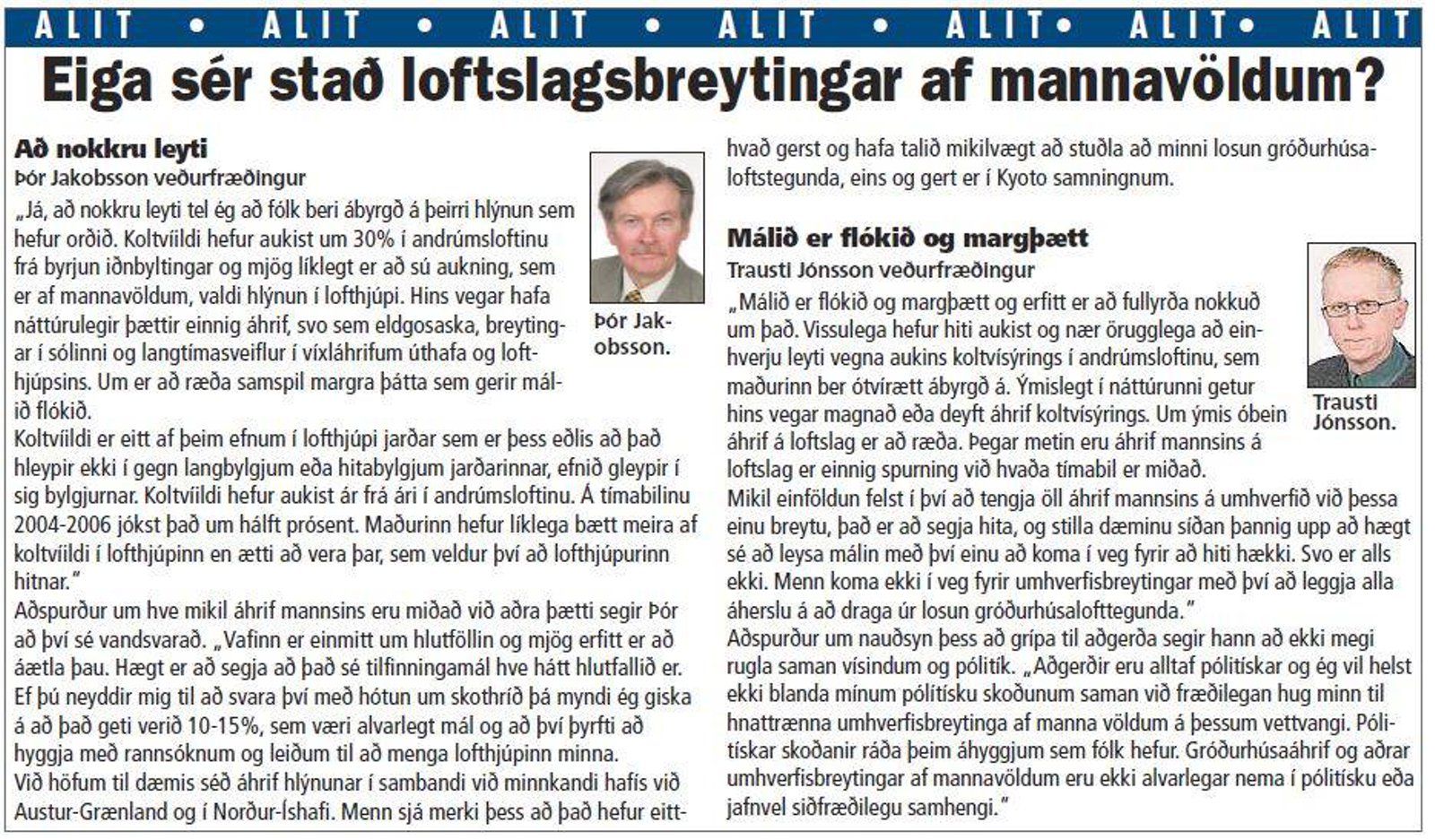




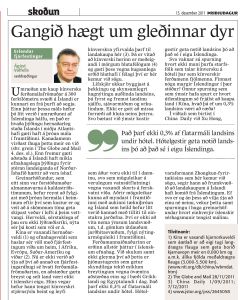
 Gangiš hęgt um glešinnar dyr, eftir Įgśst Valfells
Gangiš hęgt um glešinnar dyr, eftir Įgśst Valfells


